Marine Serre SS20 Imagines “FUTUREWEAR” in a Post-Apocalyptic Climate
Over the past few years, at only 27 years old, French designer Marine Serre has made quite a remarkable impact on the fashion industry. Previously Demna Gvasalia (of Vetements and Balenciaga)’s protégé, she became the first French designer to take home the LVMH prize just two years ago in 2017. Since then, she’s utilized her overnight success wisely. Her signature futuristic moon-patterned tops, leggings and catsuits have attracted quite a bit of attention from the public, and individuals ranging from K-Pop idols to Beyoncé have been spotted donning Serre’s signature designs. With all eyes on her for her SS20 collection, Serre managed to utilize her signature motif, the idea of the future, and direct it to a real-world problem; the impending impacts of climate change on our planet.
Serre’s work has always placed a strong impact on environmental sustainability. As of right now, 50% of her clothing is made with purely upcycled materials. As Serre stated in an interview with I-D, “Whether I make my collection from recycled, reclaimed materials, or completely new fabrics, the design of the finished garment will be exactly the same, so why wouldn’t I opt for sustainability?” Having this mindset since her first catwalk, it is no surprise that her newest collection takes a more demonstrative approach. Marée Noire, the title of her SS20 collection, translates to Oil Spill, a different perspective than her previous collections. She gives the idea of “FUTUREWEAR”, the core of all her collections, a new meaning. Instead of creating collections with an idealistic view of what future fashion could look like, Marée Noire presents a very plausible future, while still maintaining the fantasy elements the masses have come to love her for.
While Serre has always designed with the idea of a post-apocalyptic future, Serre adds a new aspect of idealization with her newest collection; worldbuilding. Invitations for the show were sent in the form of an umbrella, and while the weather in Paris was somber, it was the perfect setting for the show to come. In a speech before the show, Serre gave context to the collection, explaining that the collection conveys groups of apocalypse survivors post-climate warfare. She separates the collection into five distinct groups, each with their own specific motifs.
One group only donned black garments (perhaps a rebel operative in this world Serre has created). Their clothing resembled some sort of ambiguous uniform, as there were no patterns or logos or anything that would typically signify Serre’s work. Another group was adorned with chains and seashells over bare skin in lieu of any protective outerwear, and unlike the previous group, typically stayed within the realm of earth tones and lighter colors. Flowing blazers were worn over catsuits and knee-high boots, a familiar reference to the sleek look Serres work became known for. A hybrid headscarf with the front of a baseball cap made many appearances styled in a versatile manner across the different groups. As the show progressed, these earth tones became vibrant colors, which greatly emphasized Serre’s use of recycled materials, showing dresses and tops made from tablecloth-like material and other upcycled textiles reminiscent of early Baroque artwork. The final group took a much more animalistic approach, as bright blue tiger print made an appearance in a multitude garments, particularly a hybrid catsuit dress.
As a whole, the collection is rather fragmented, a reflection of the chaos and sheer doom Serre attempts to convey. But, it isn’t all over the place. While the factions displayed in the runway show are fairly distinct, there are underlying elements which tie it all together, like the use of charms throughout the collection. This mirrors shared traits throughout communities in this world Serre has devised.
The collection as a whole is the greatest extrapolation we have seen from Serre’s traditional work, but it is by no means unrecognizable. In Marée Noire, Serre does not not completely abandon the aspects that have remained stagnant throughout her previous work; her trademark moon-print logo made many appearances throughout the collection, in the form of denim, leggings, blazers, catsuits, and other garments. It still holds all the elements that made her breakout creations so widely-regarded, but in a manner unfamiliar to her primary consumer base.
The collection as a whole is a fantastic example of fashion being used as a vehicle for social commentary and activism, and brings an overall tone of consciousness to the fashion industry. While names like Greta Thunberg and other activists are taking the topic of climate change and sustainability to major world leaders, it is clear that the industry has much to work on; Marée Noire is a reality check above all else.
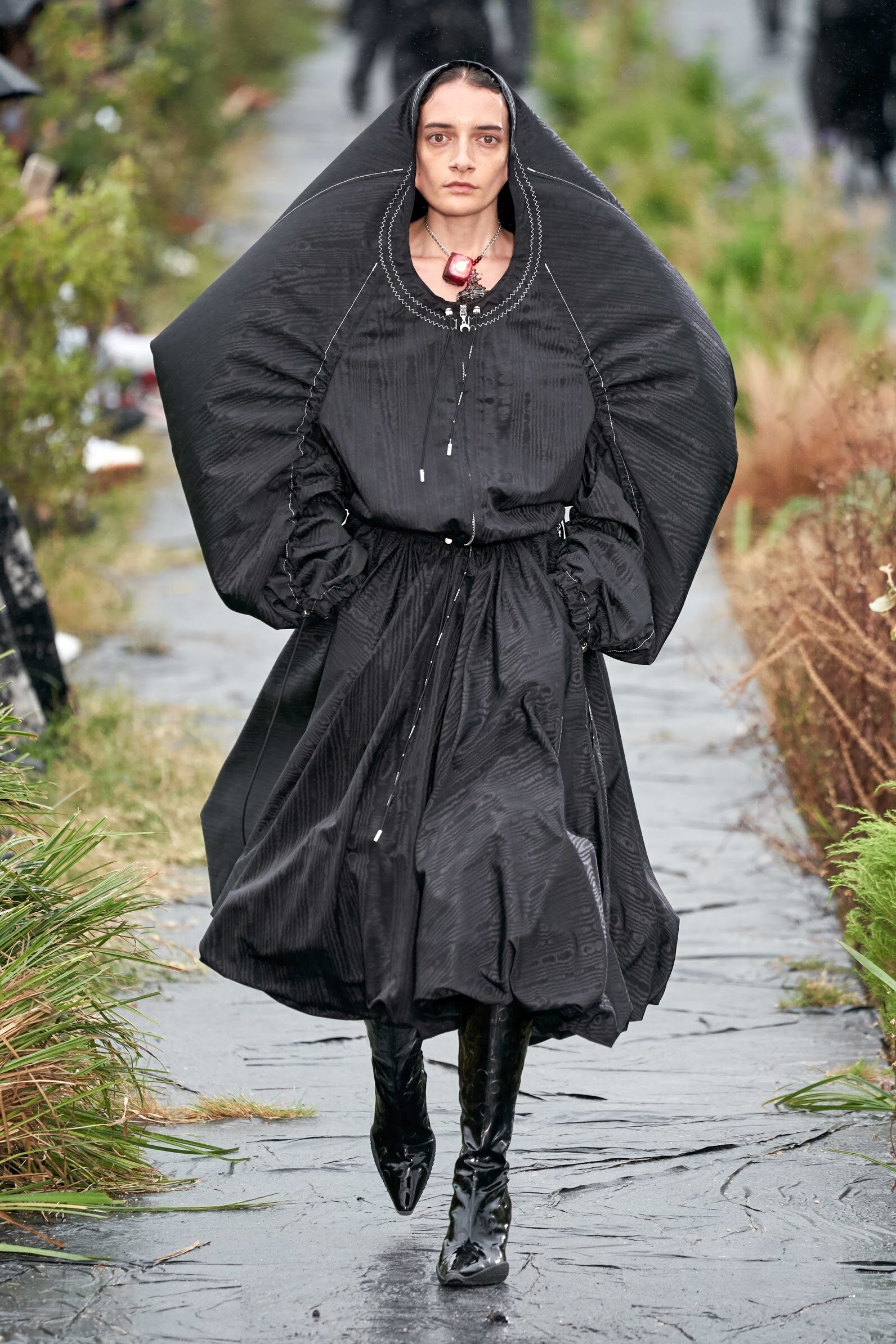

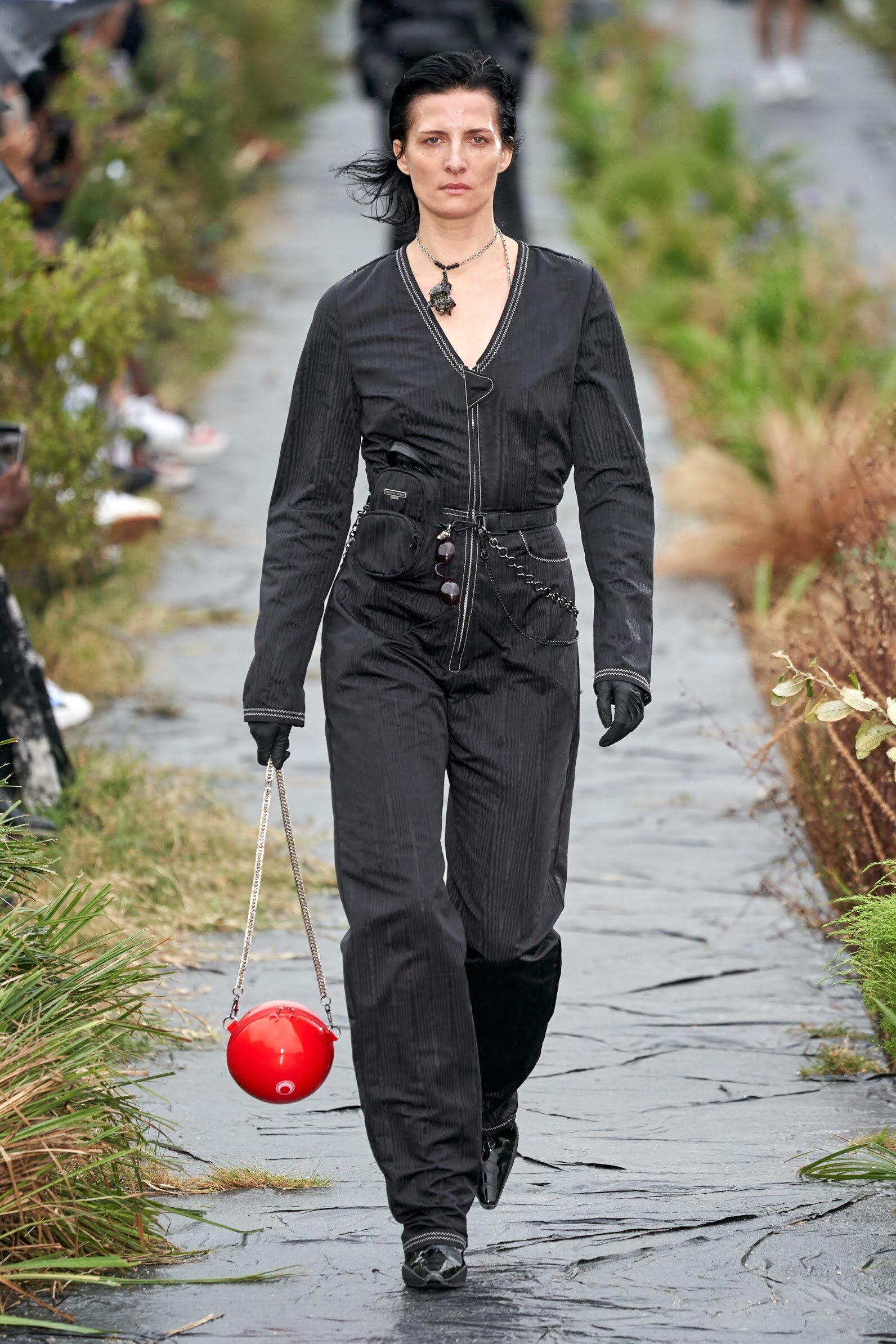
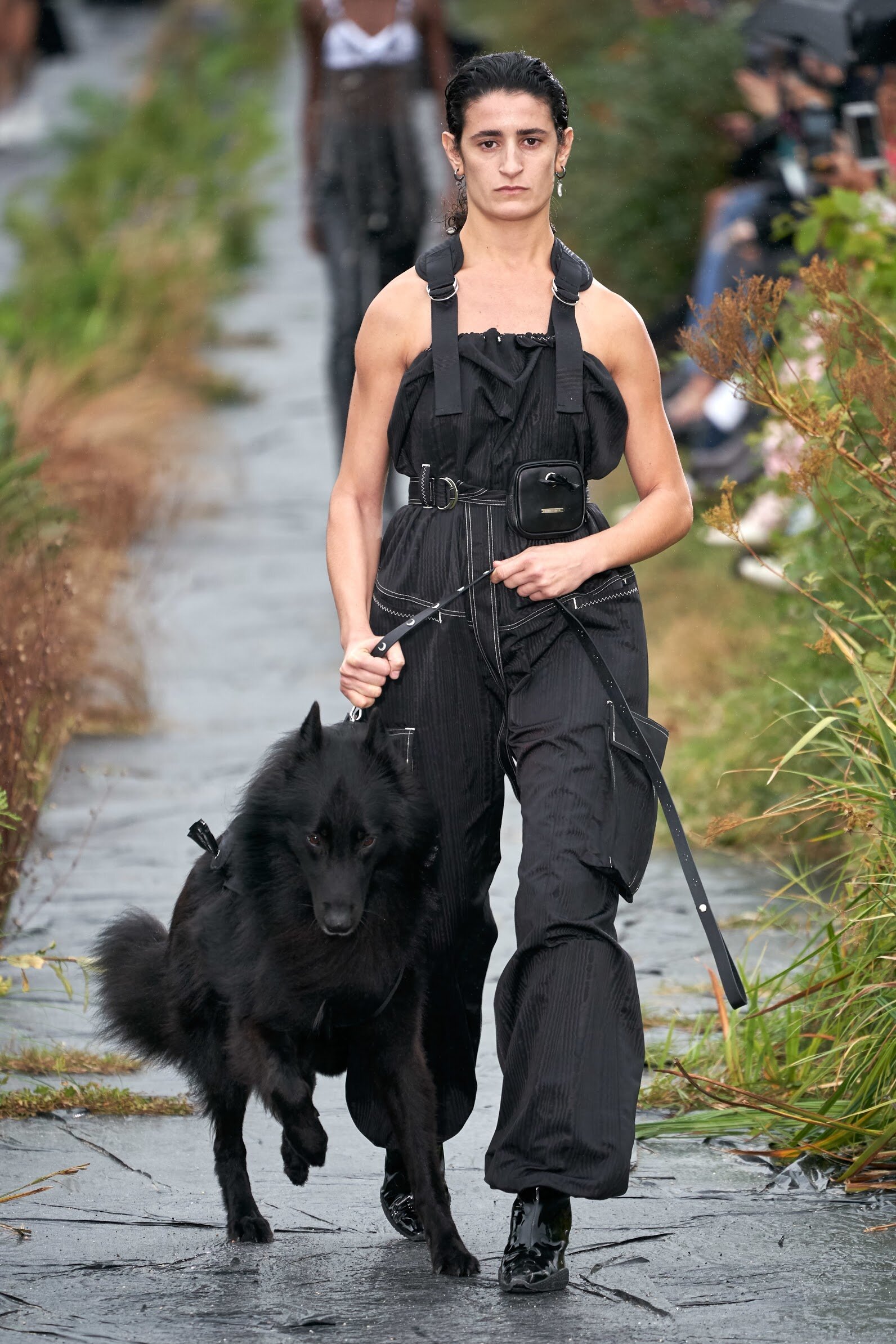

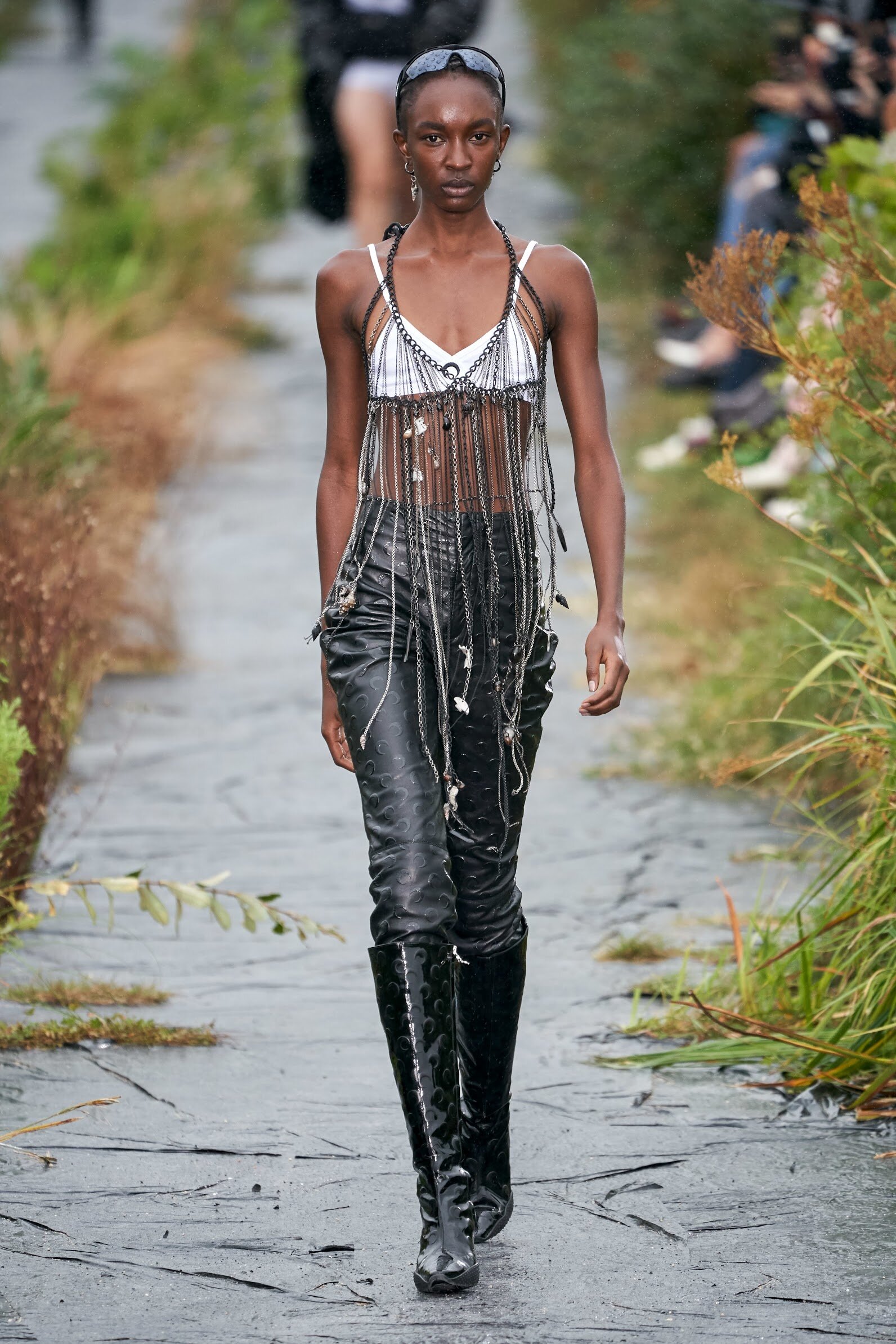

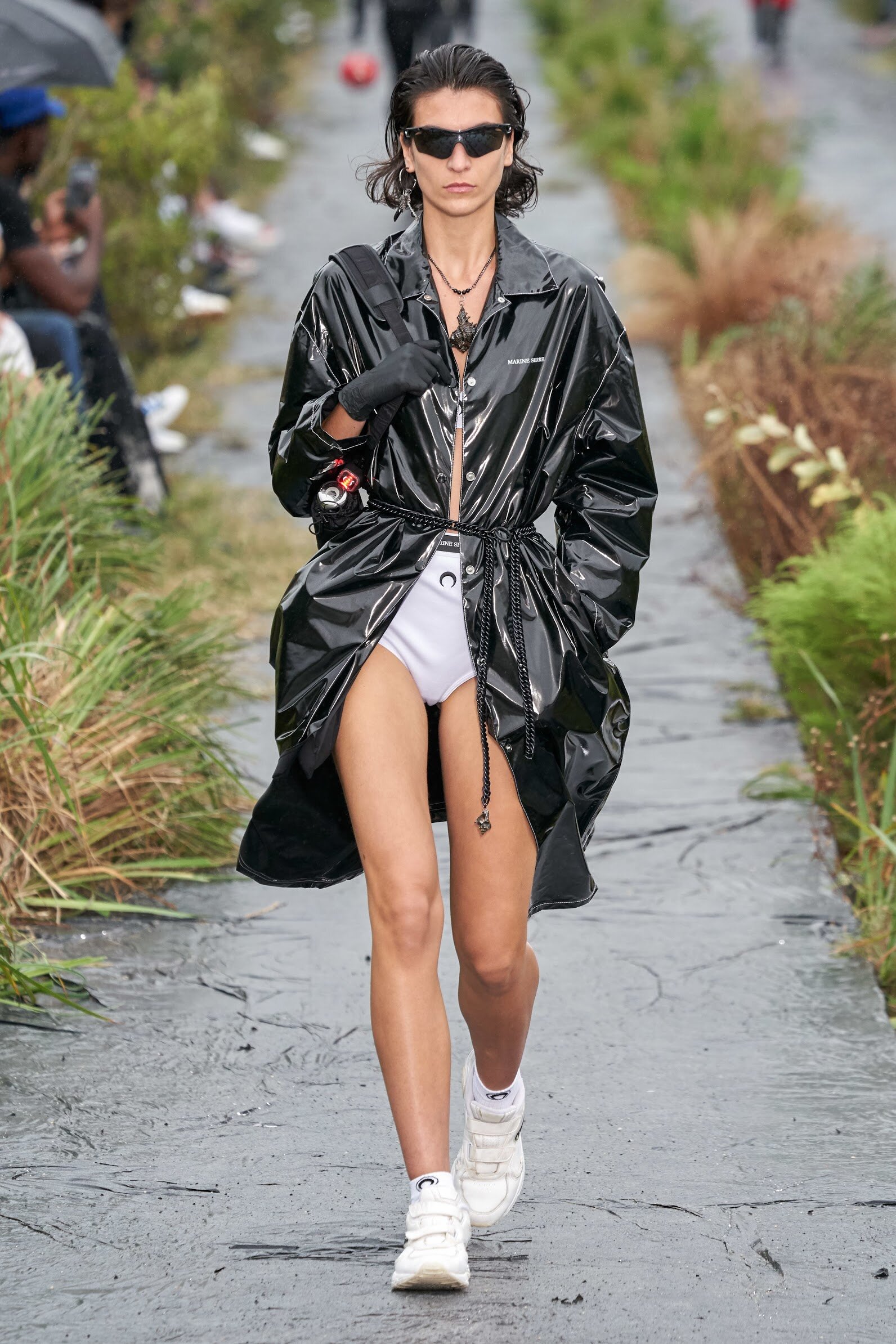
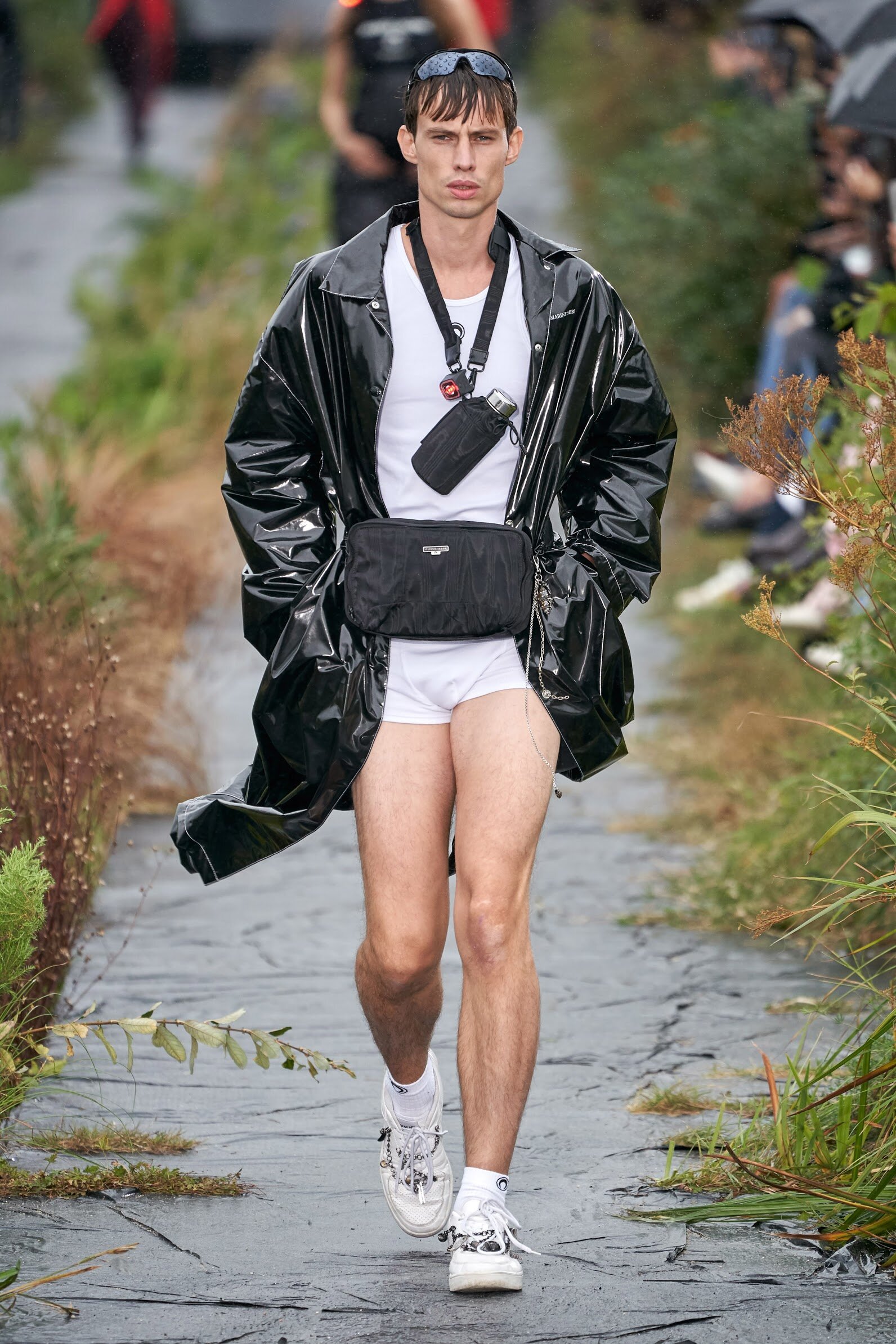
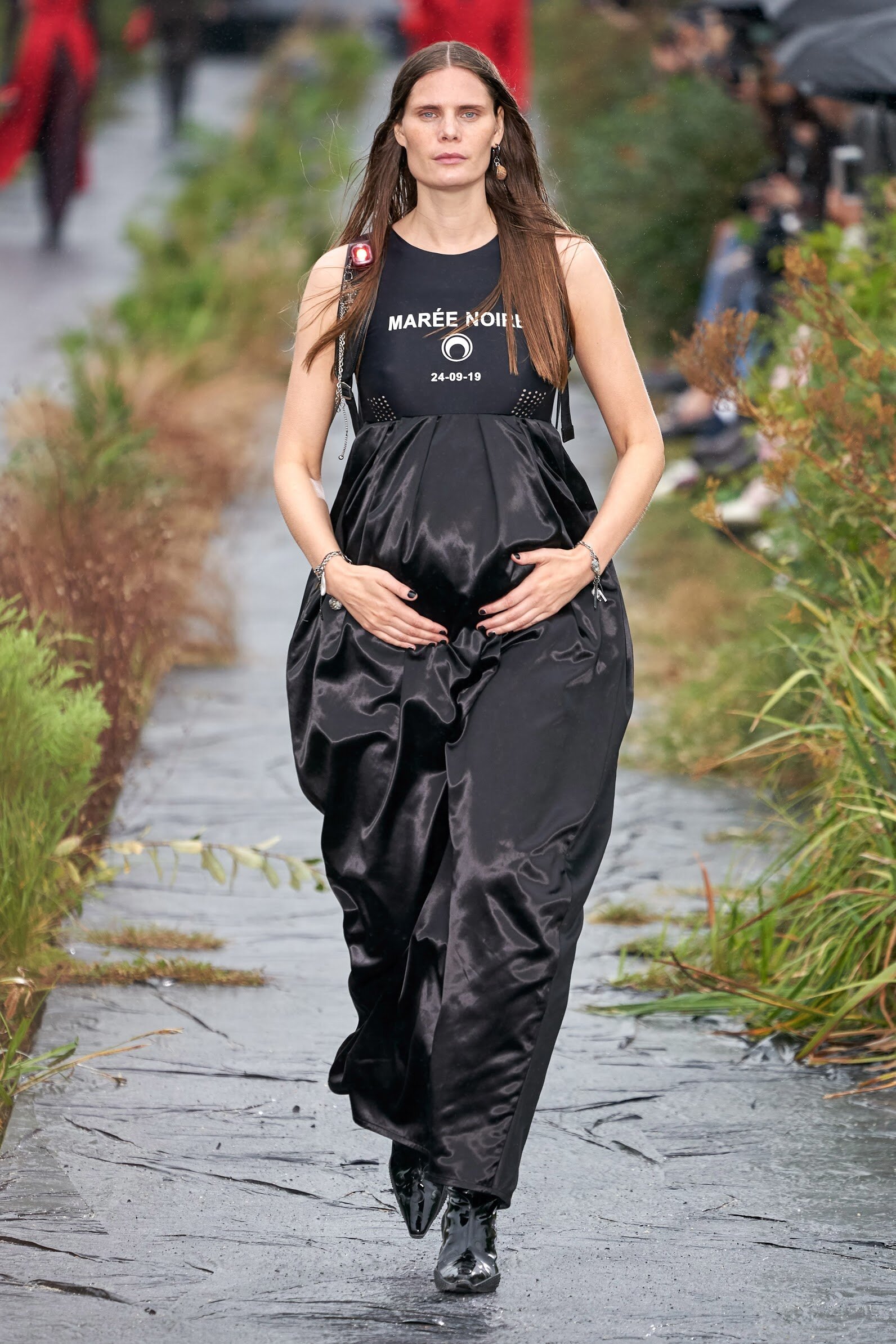
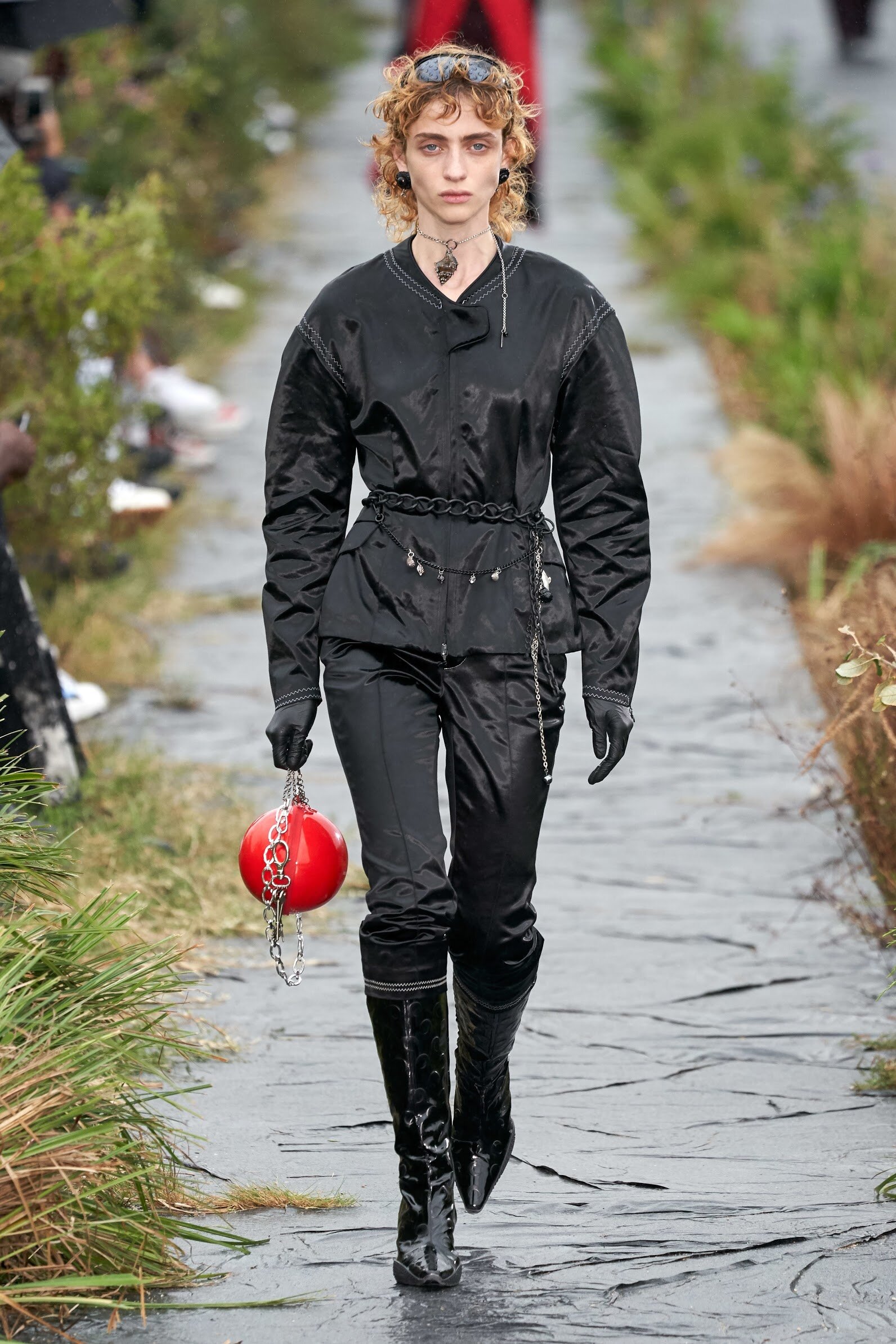
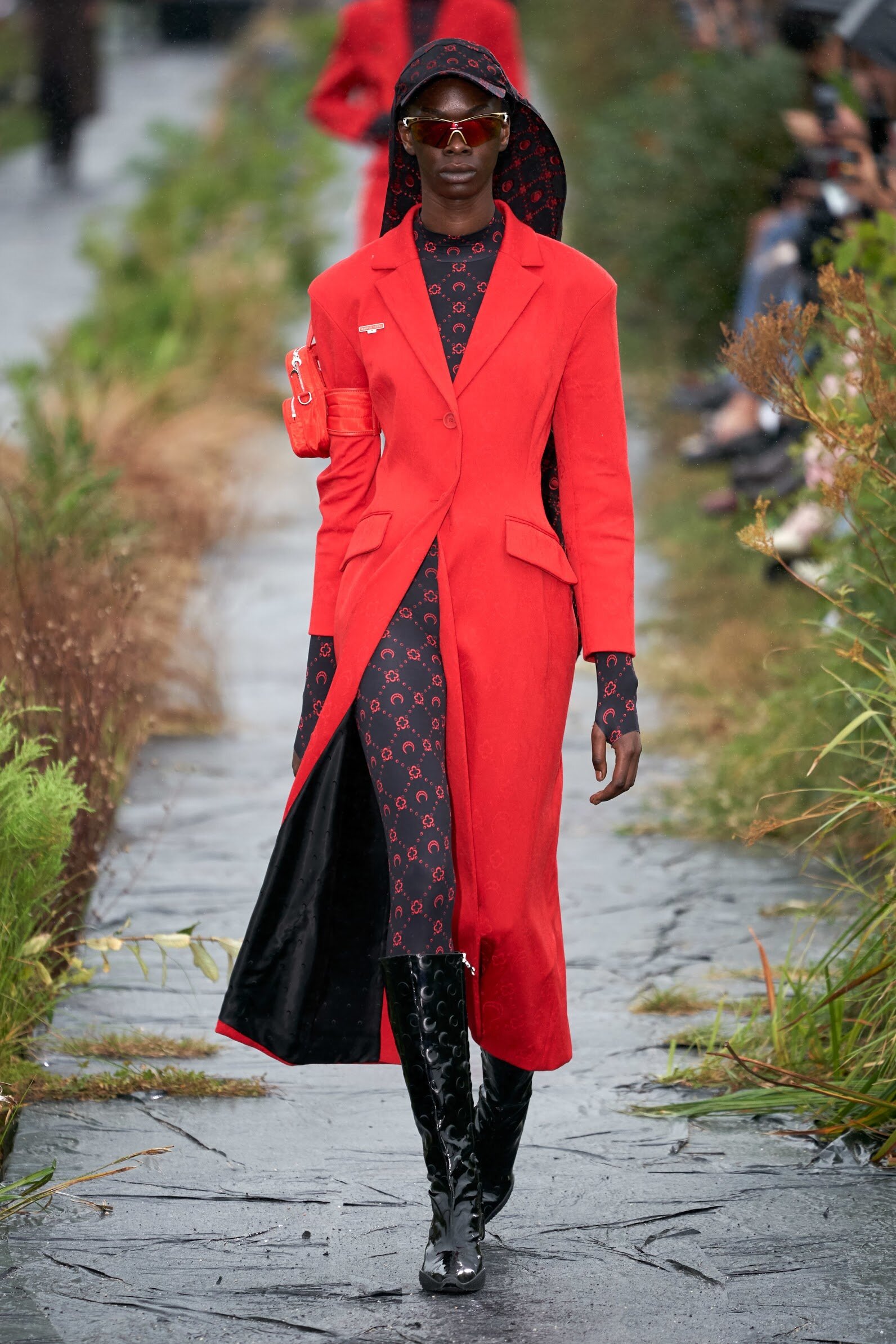

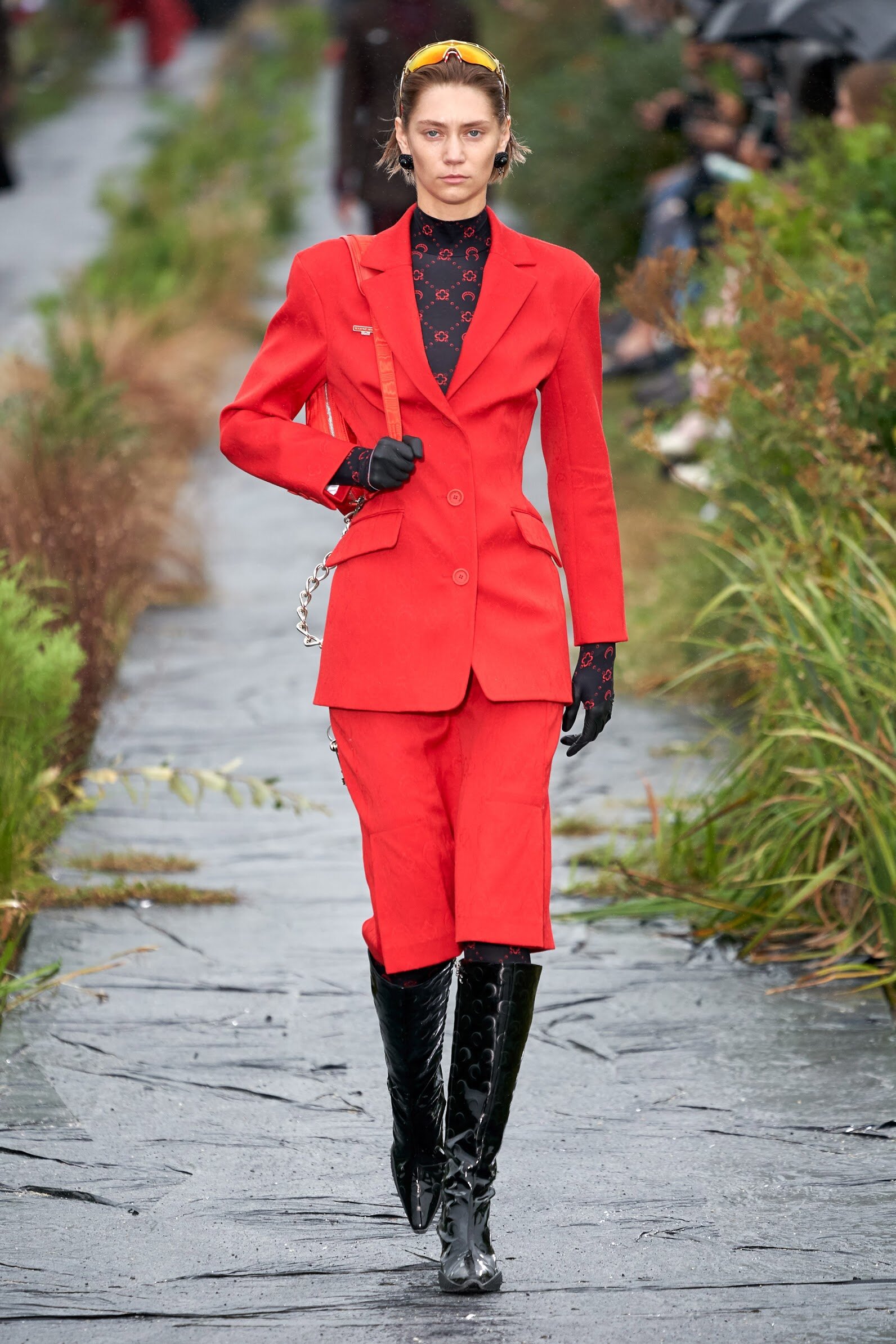
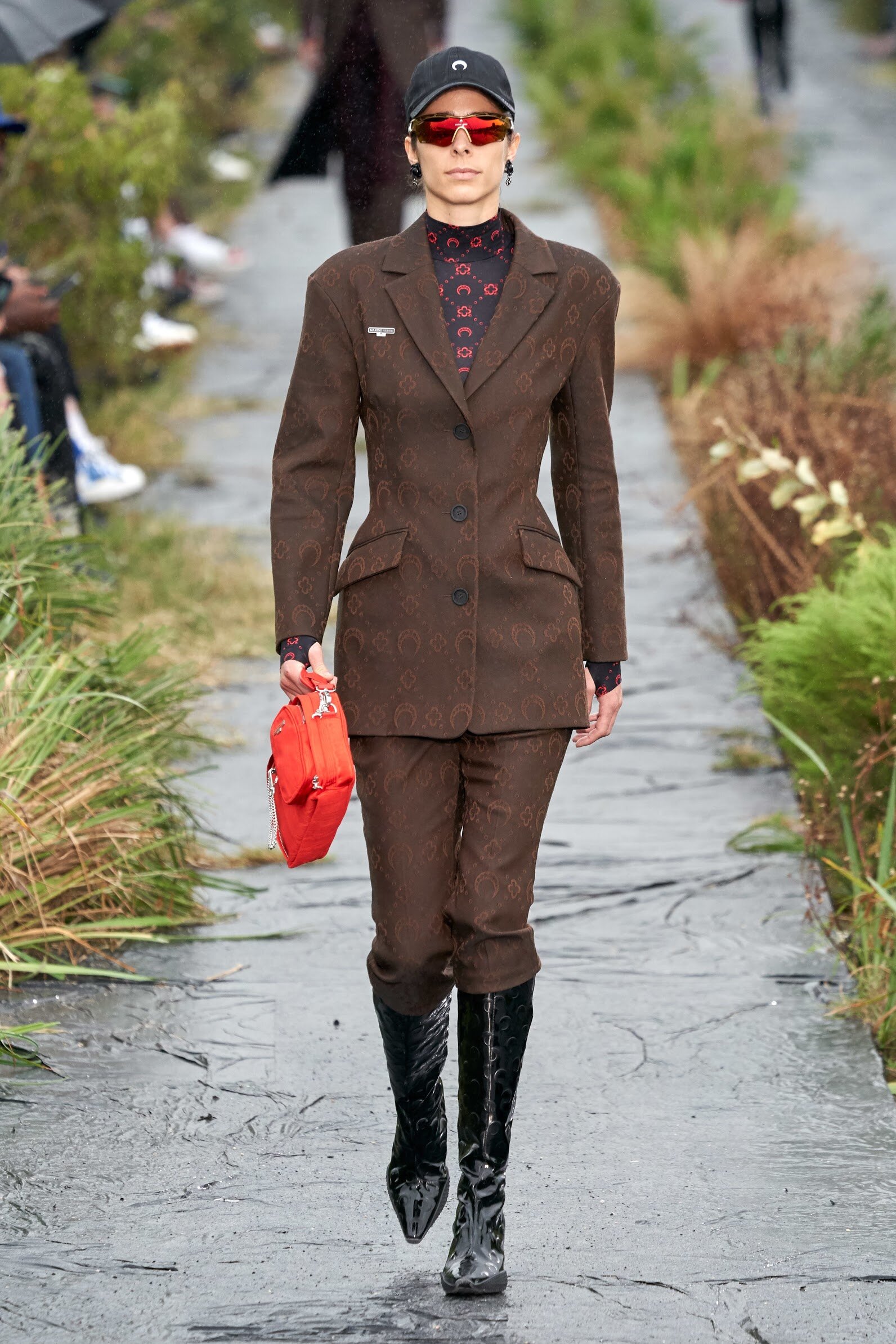
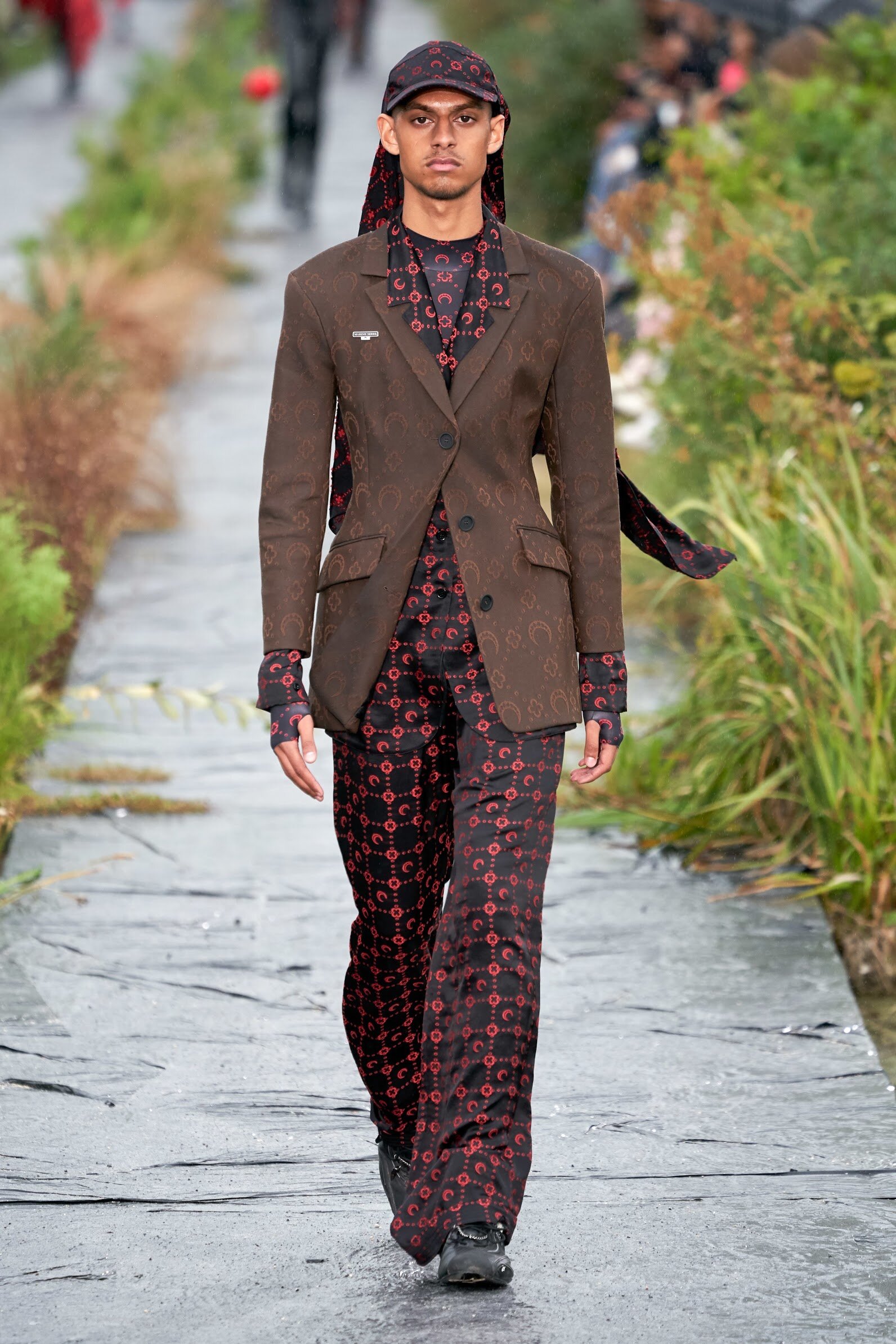

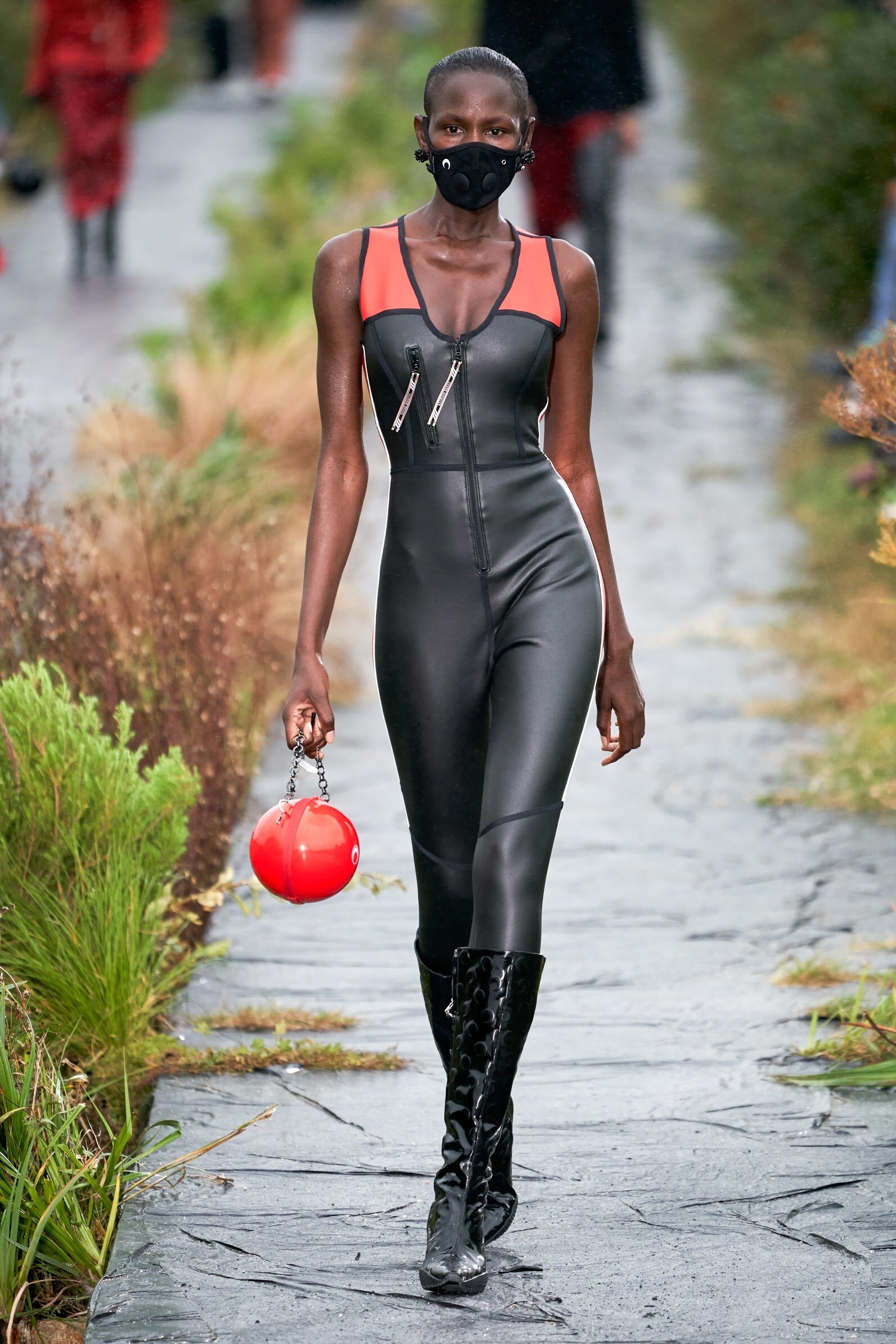

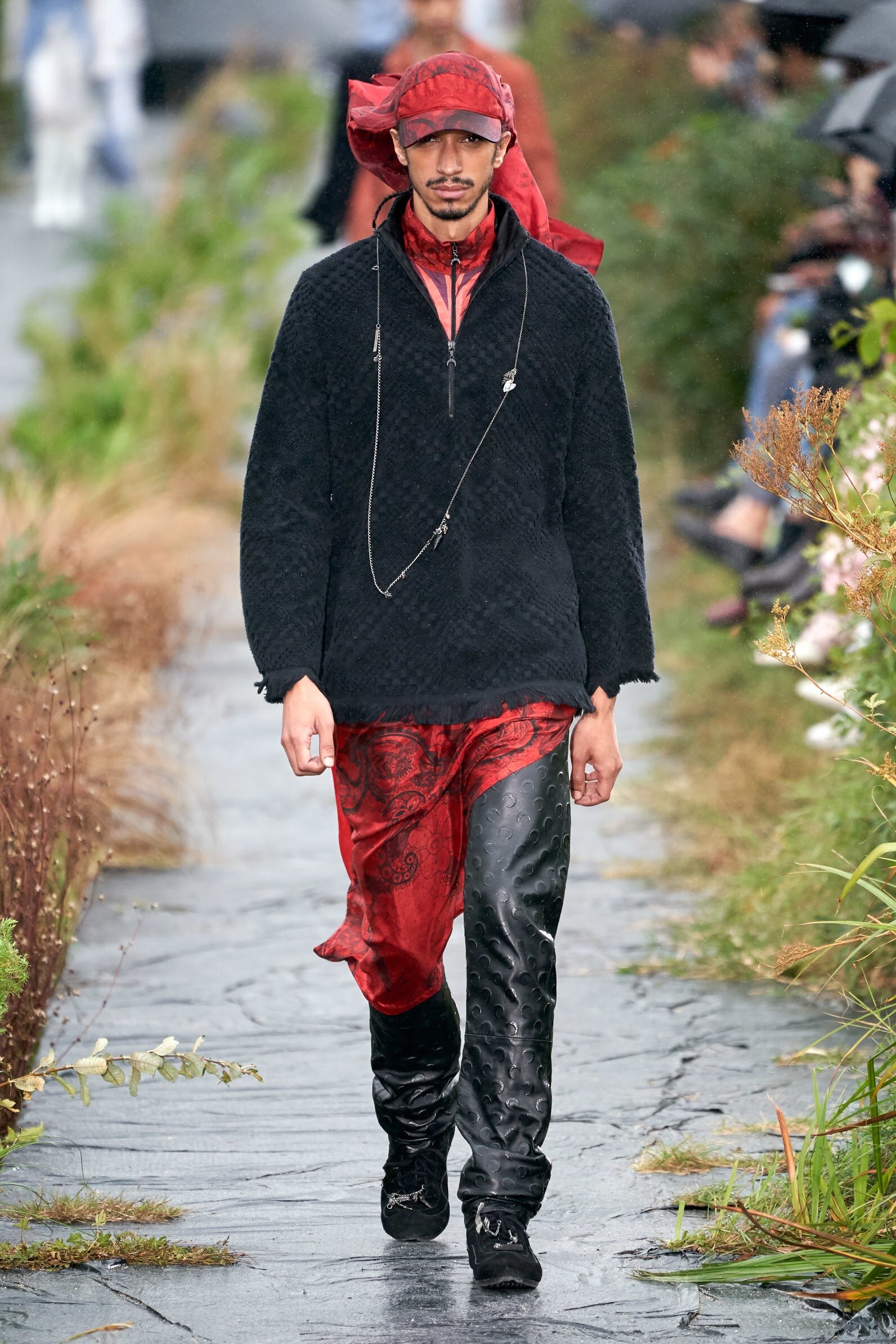

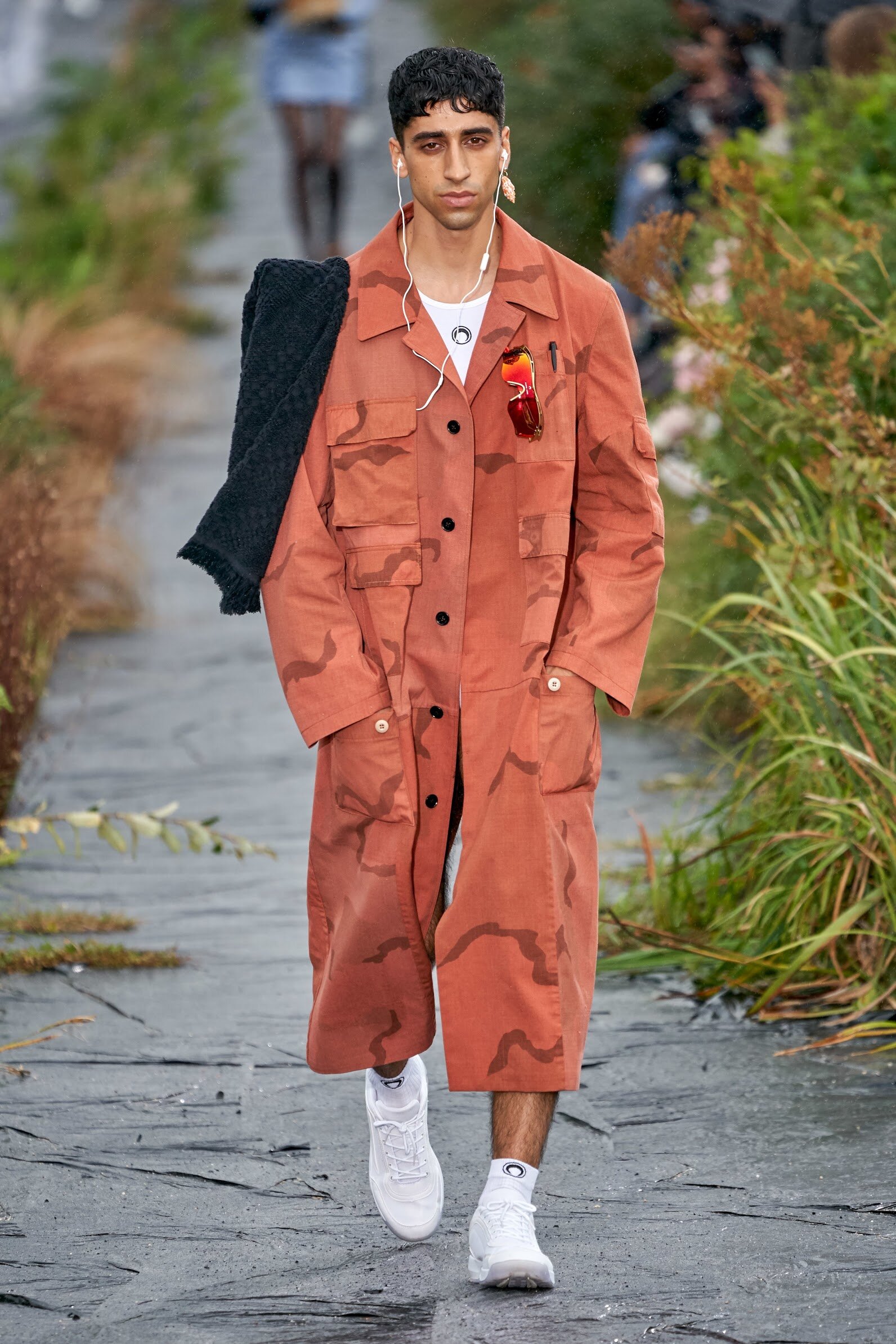

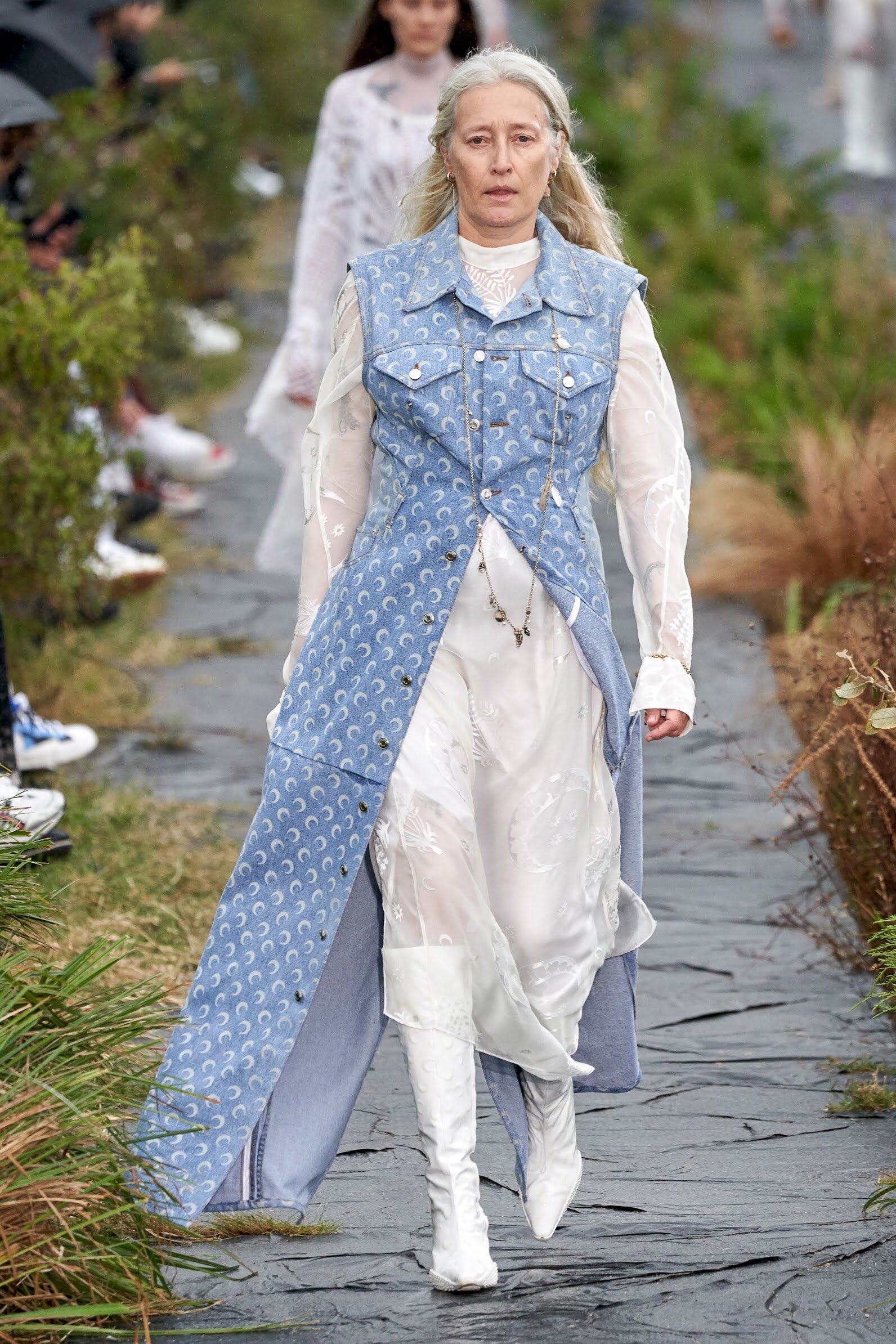
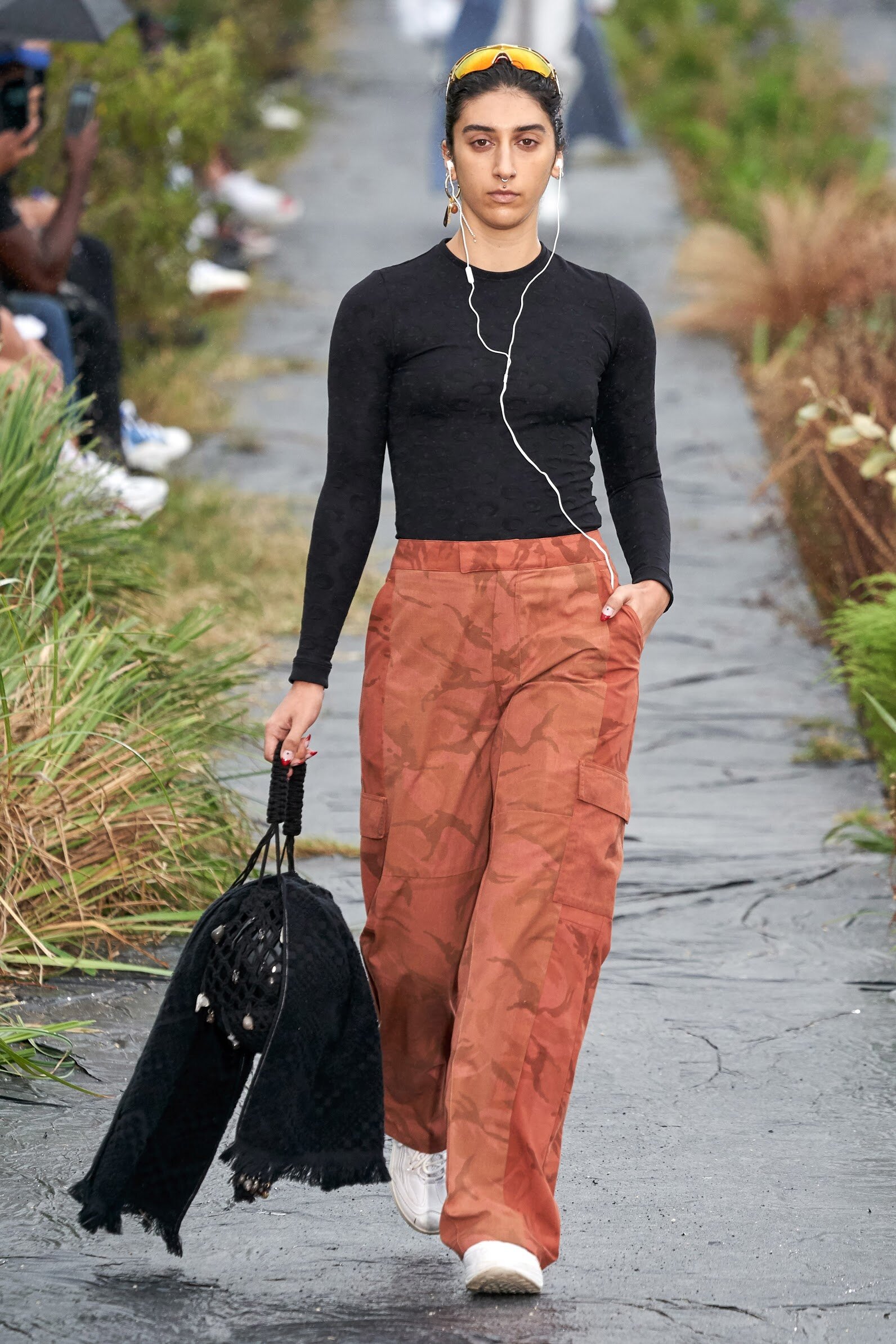
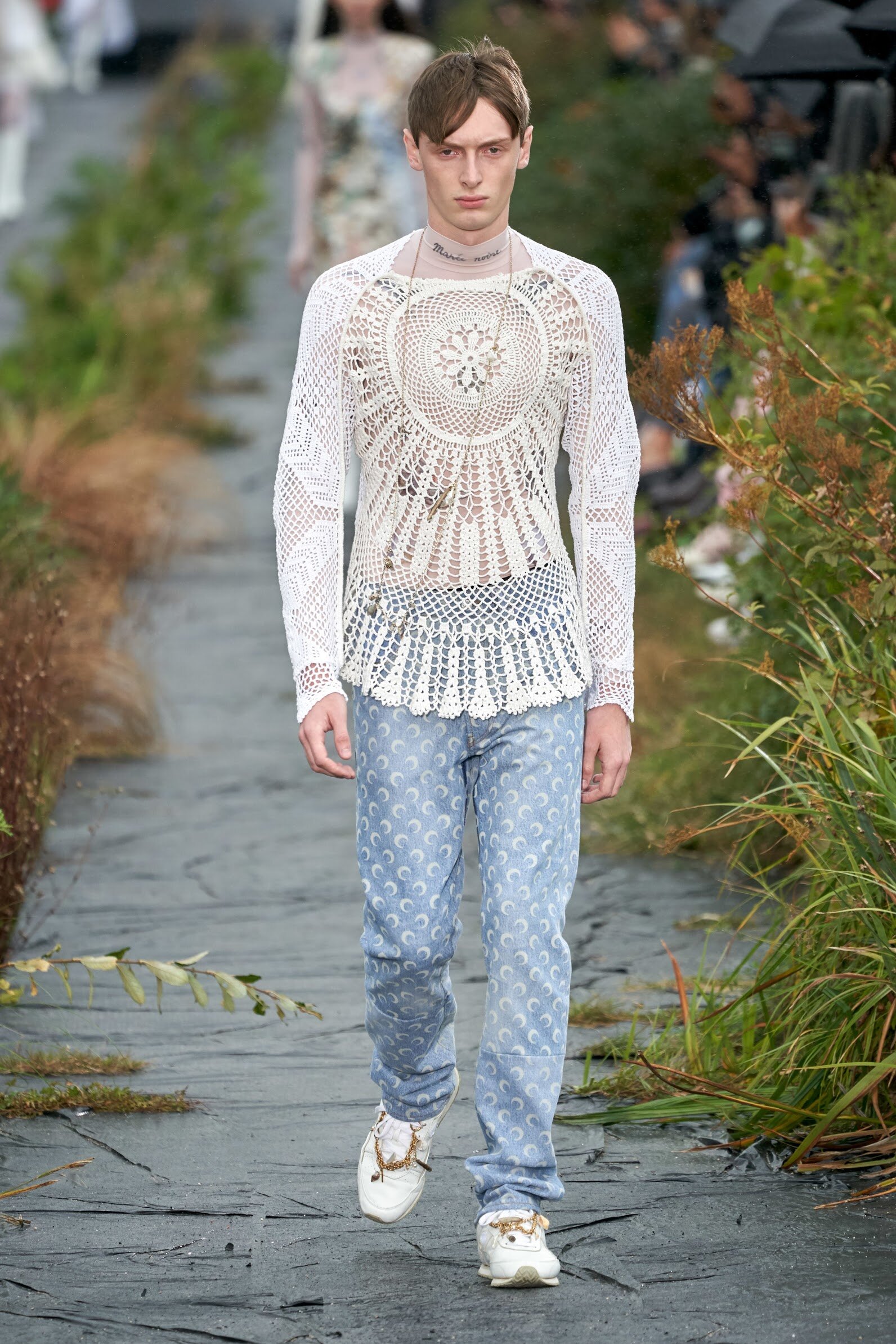


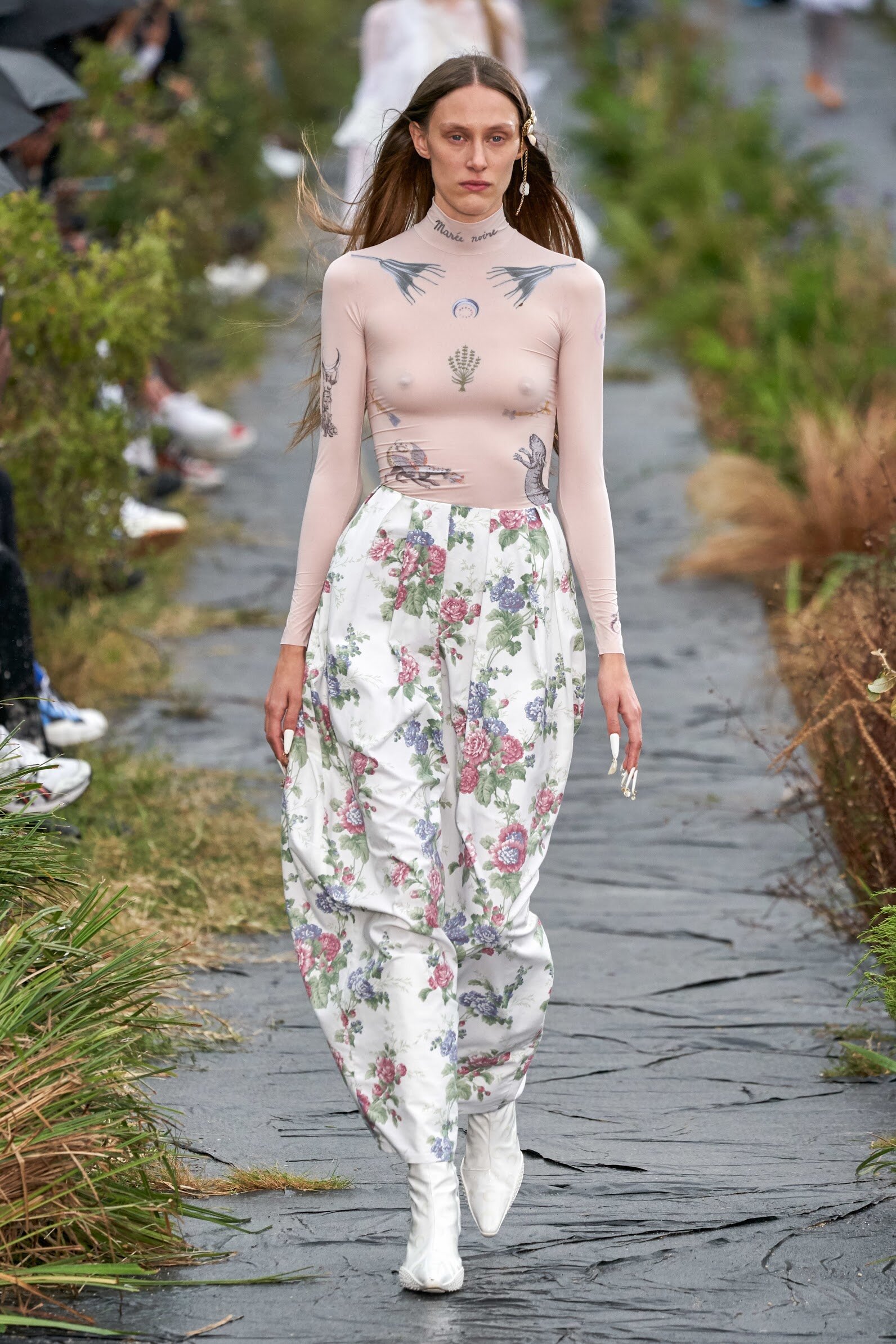
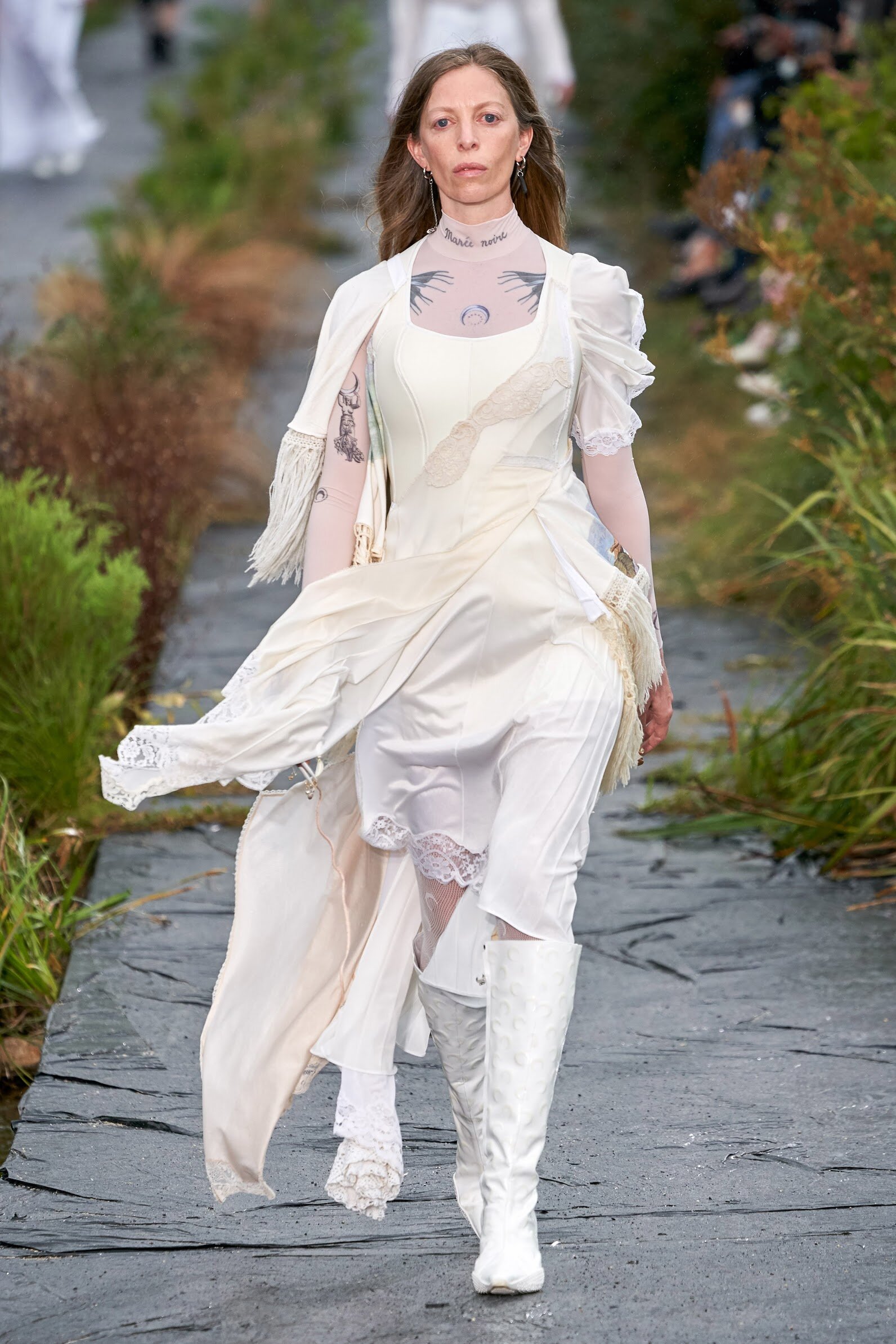

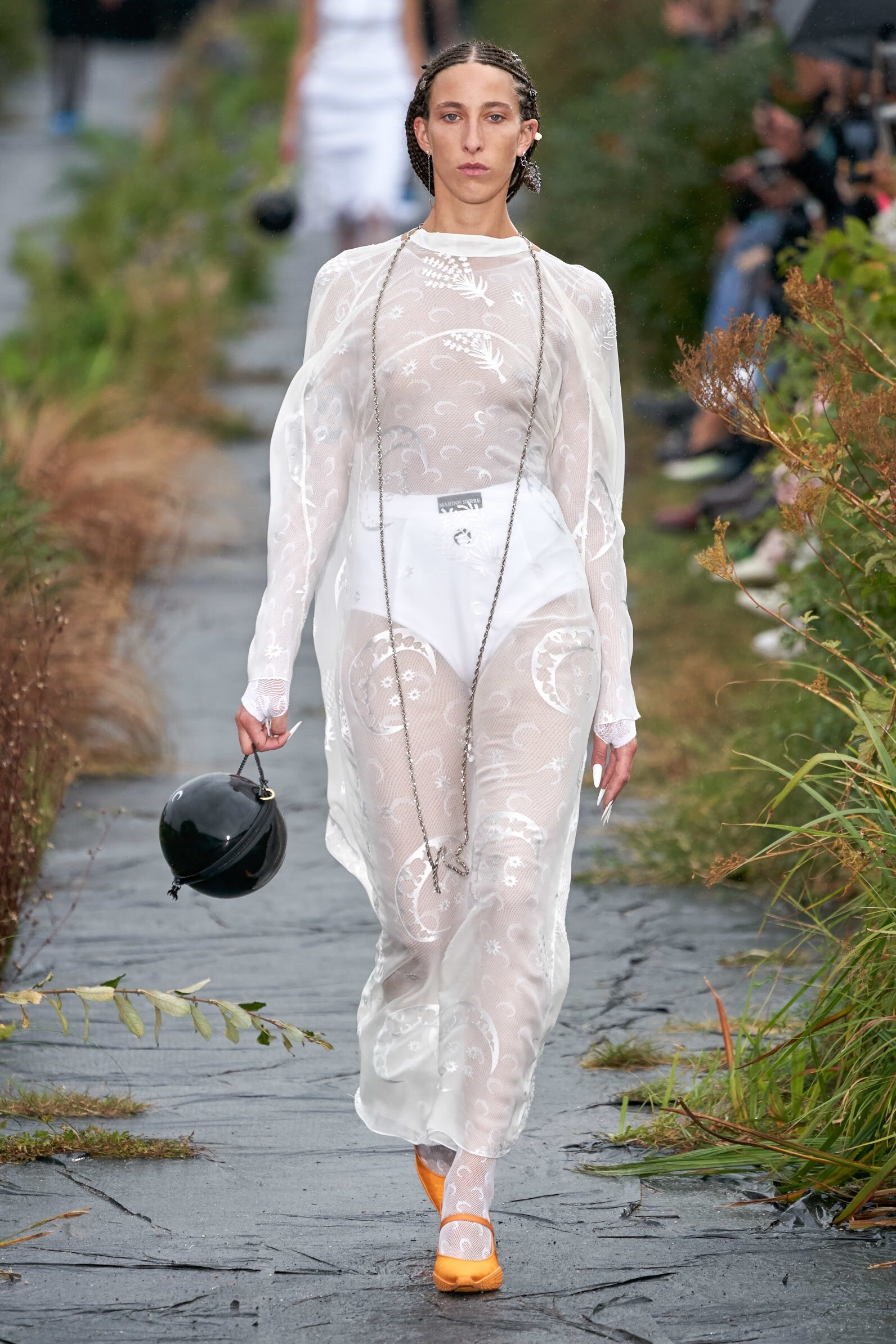

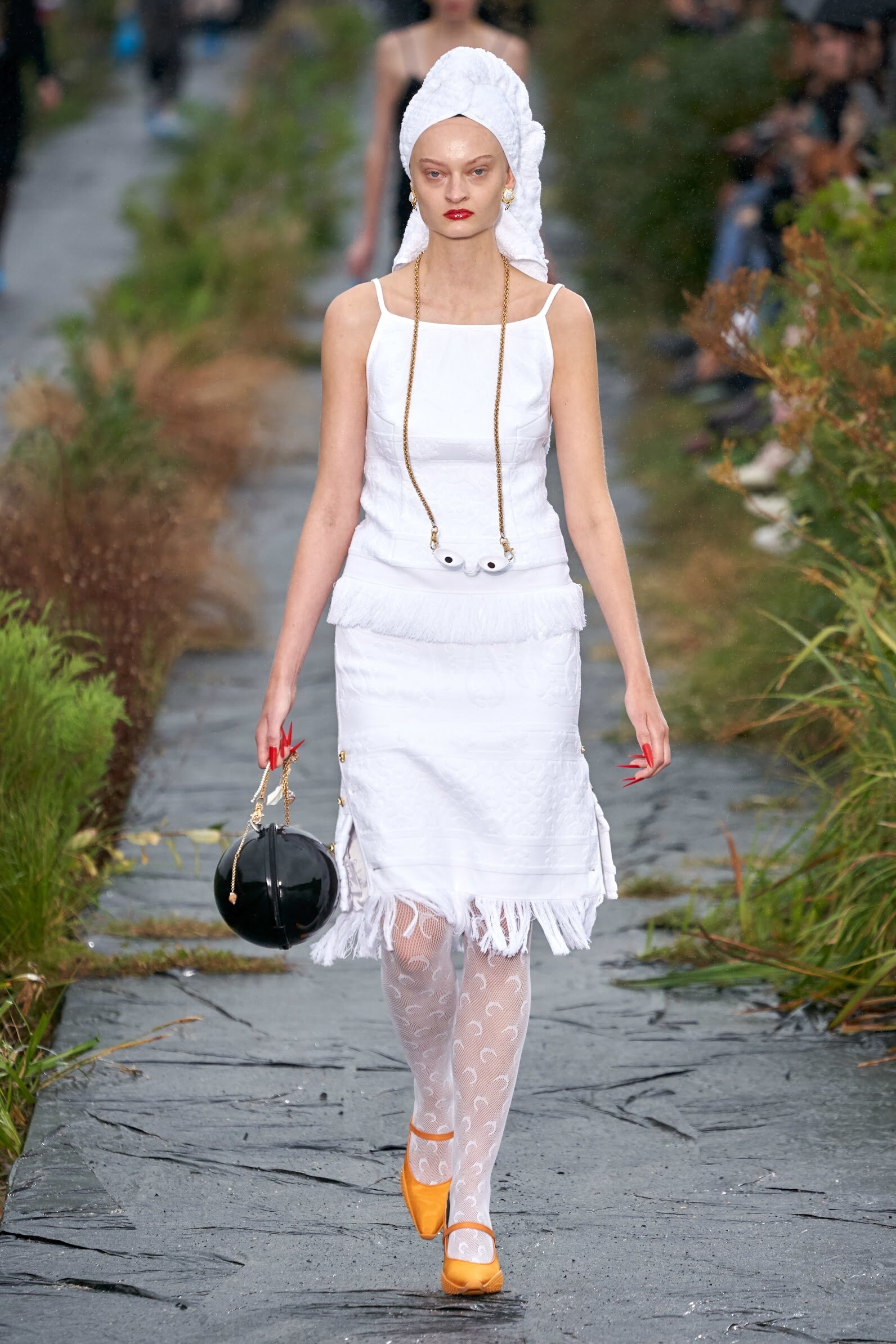
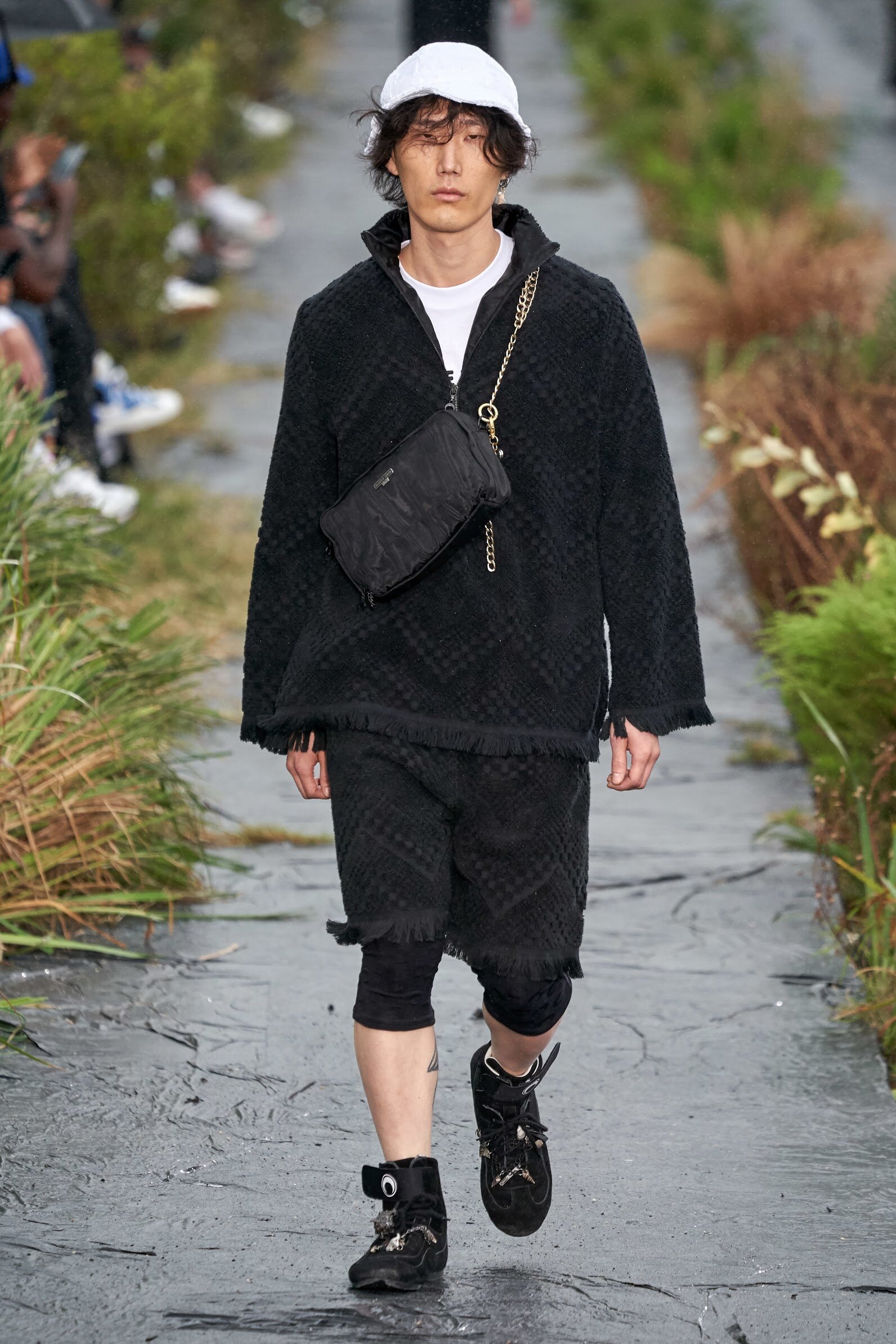
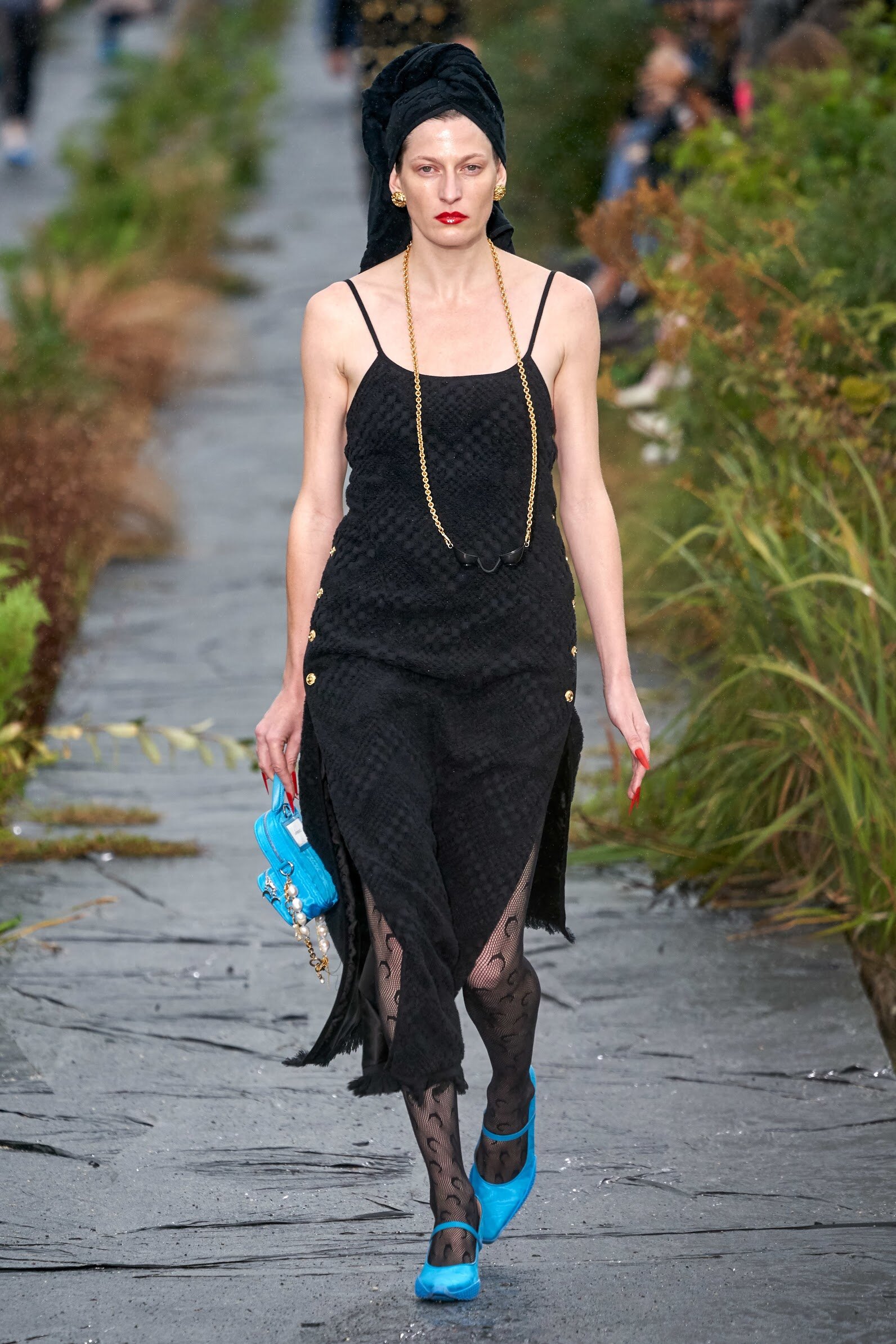
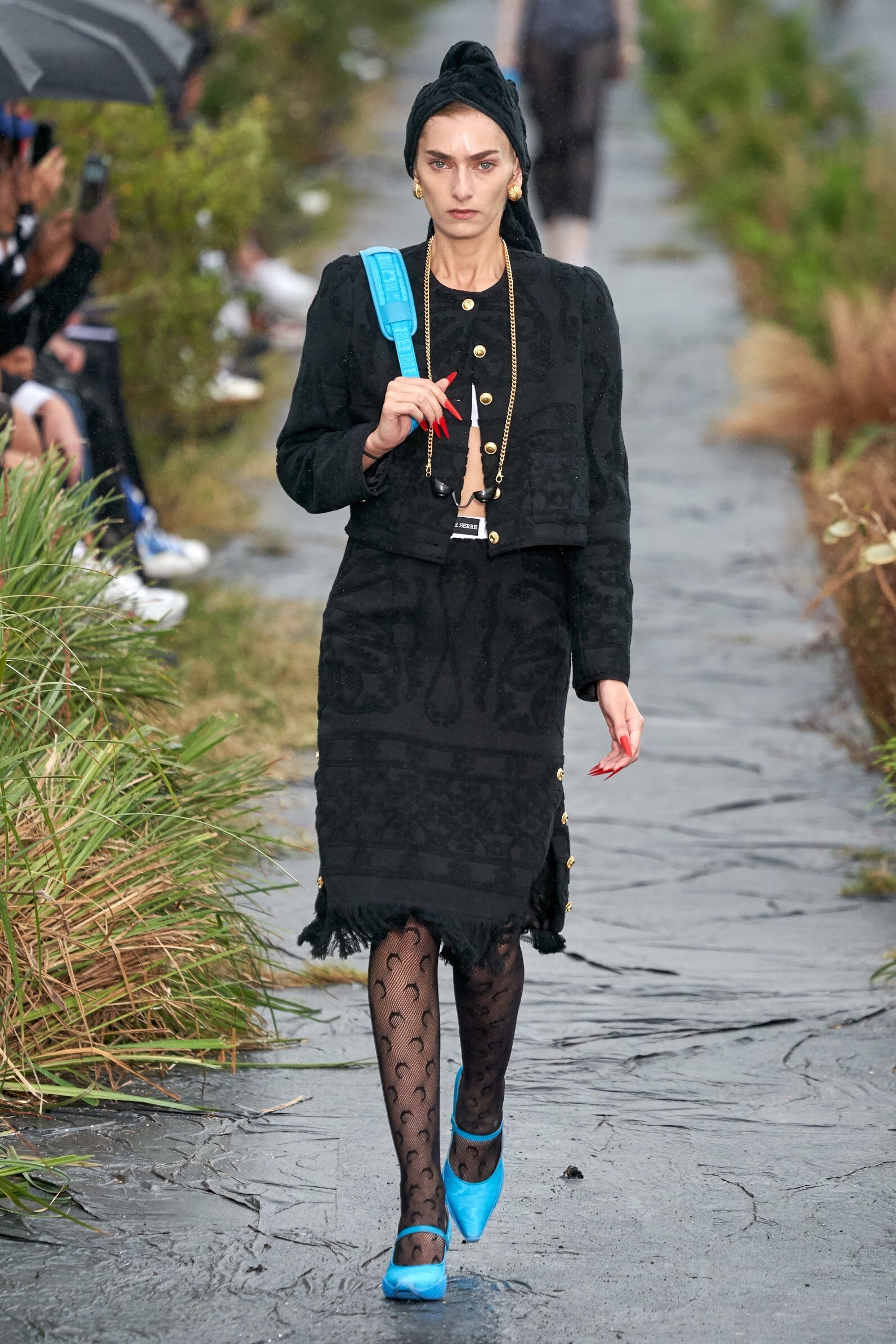
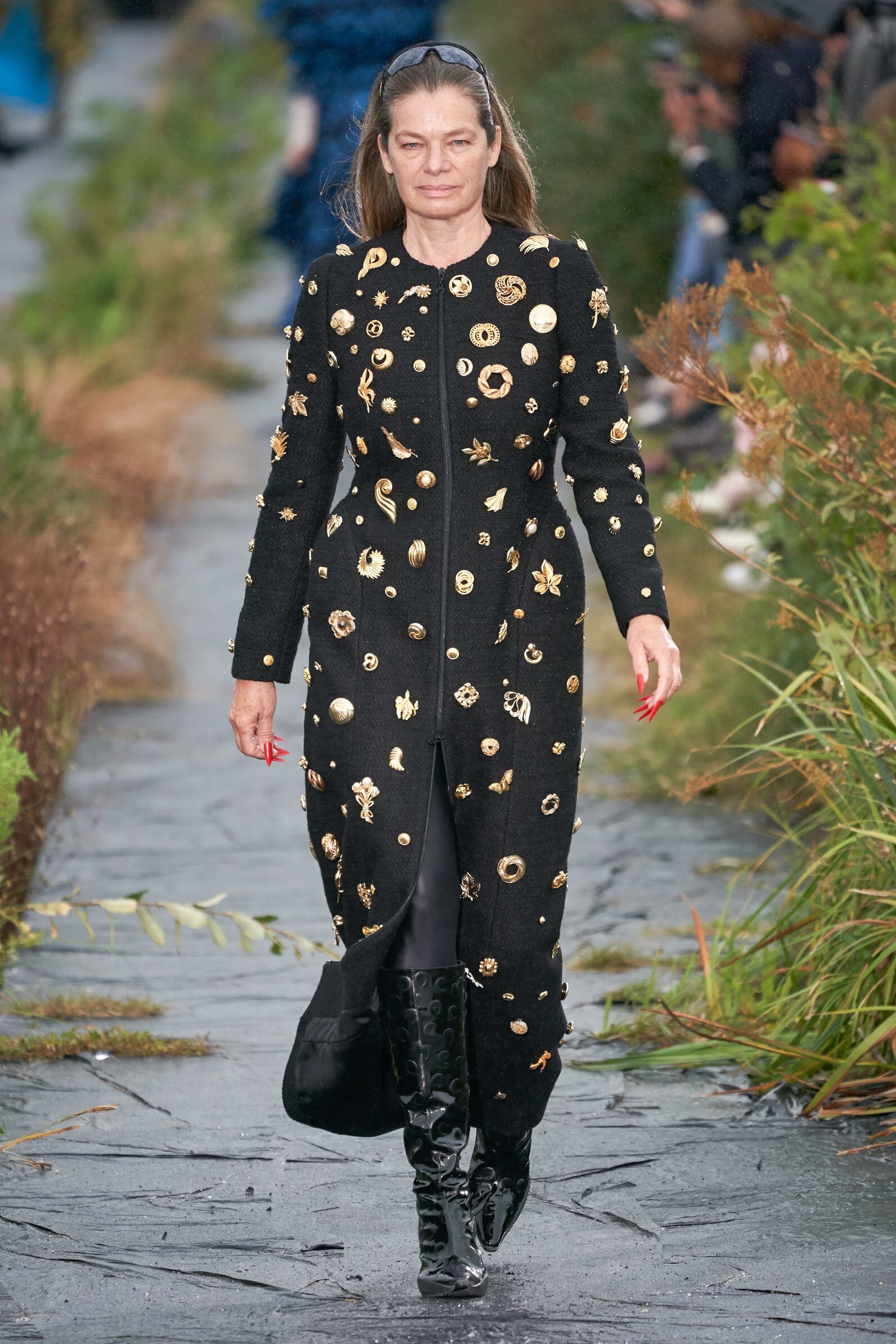
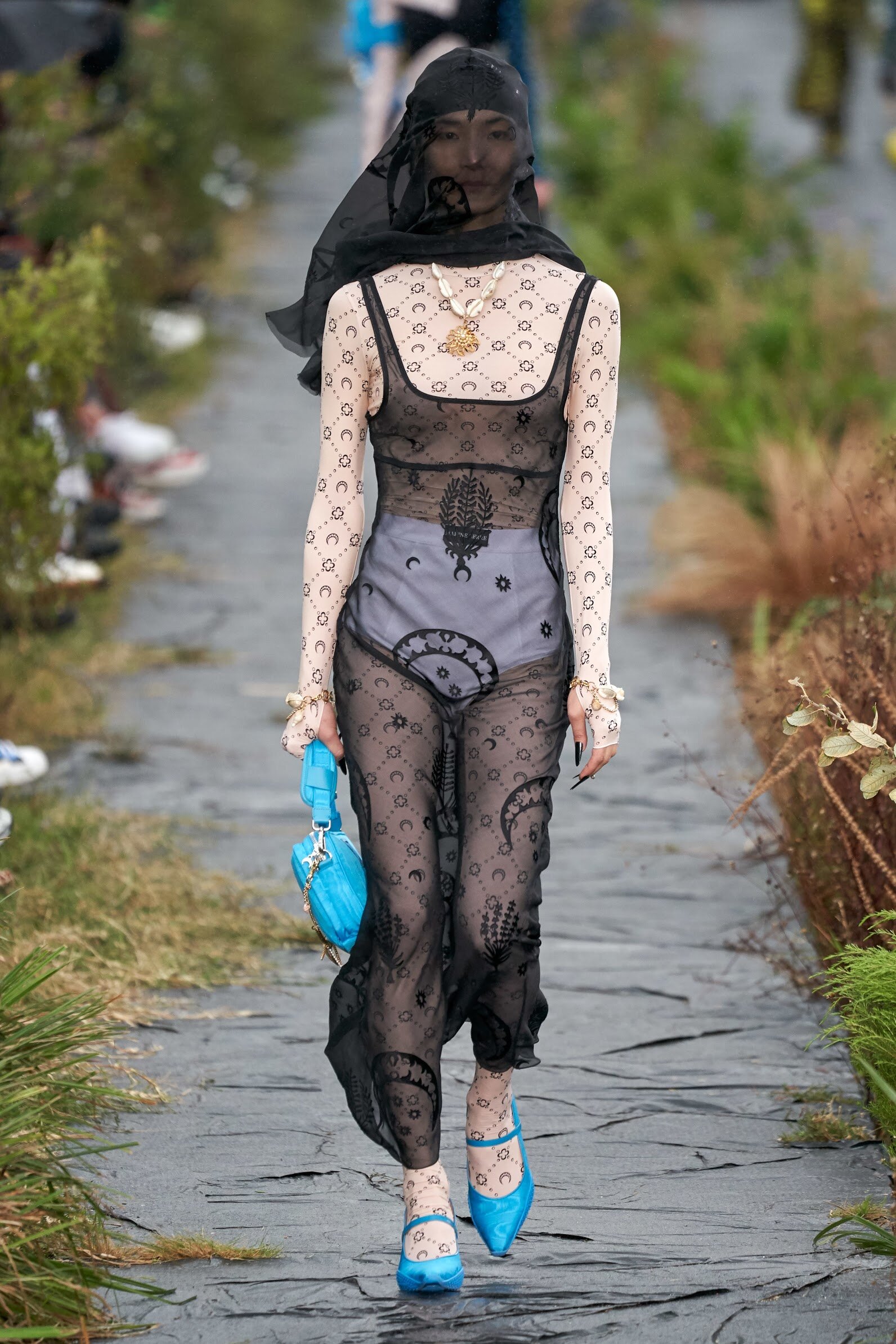
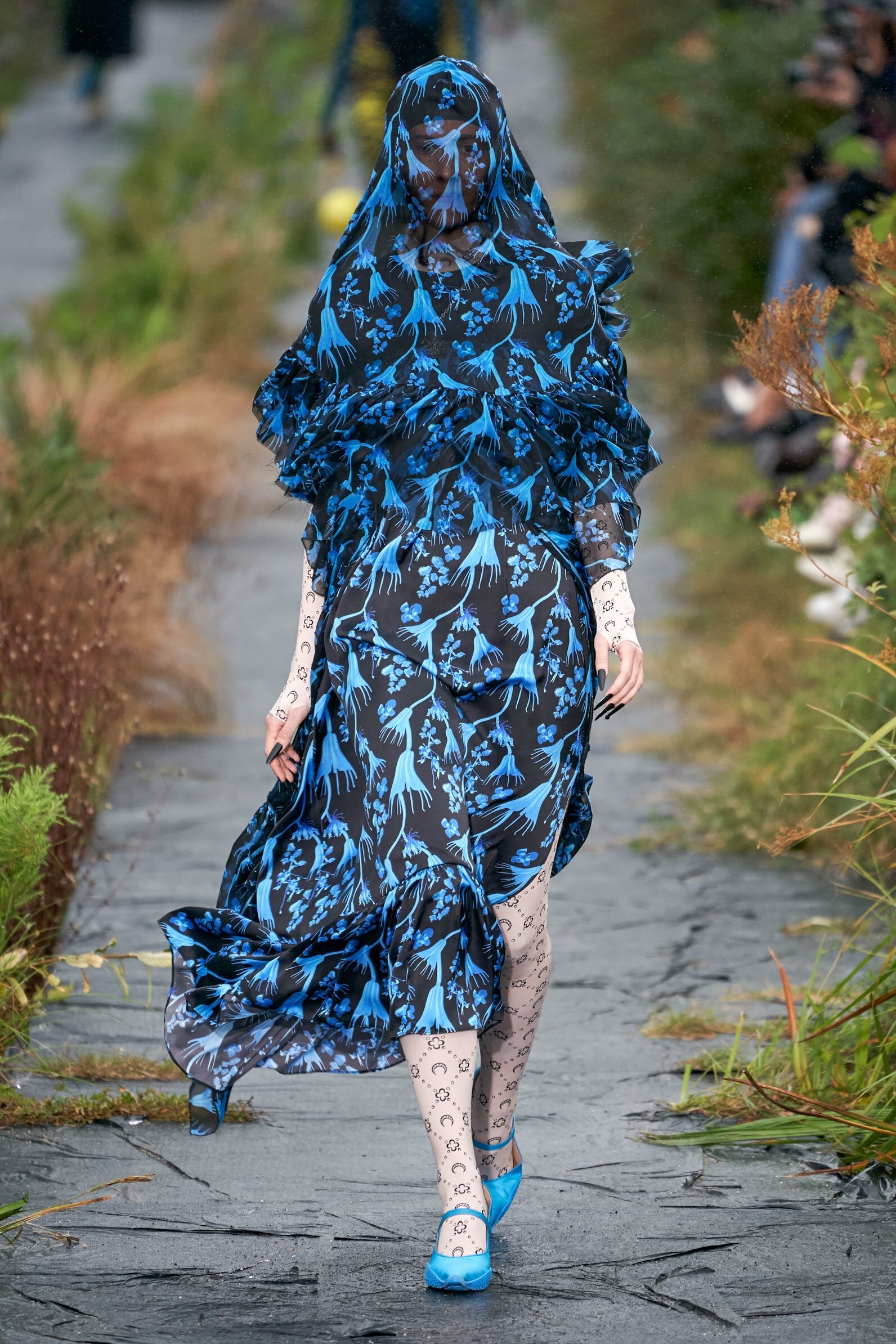
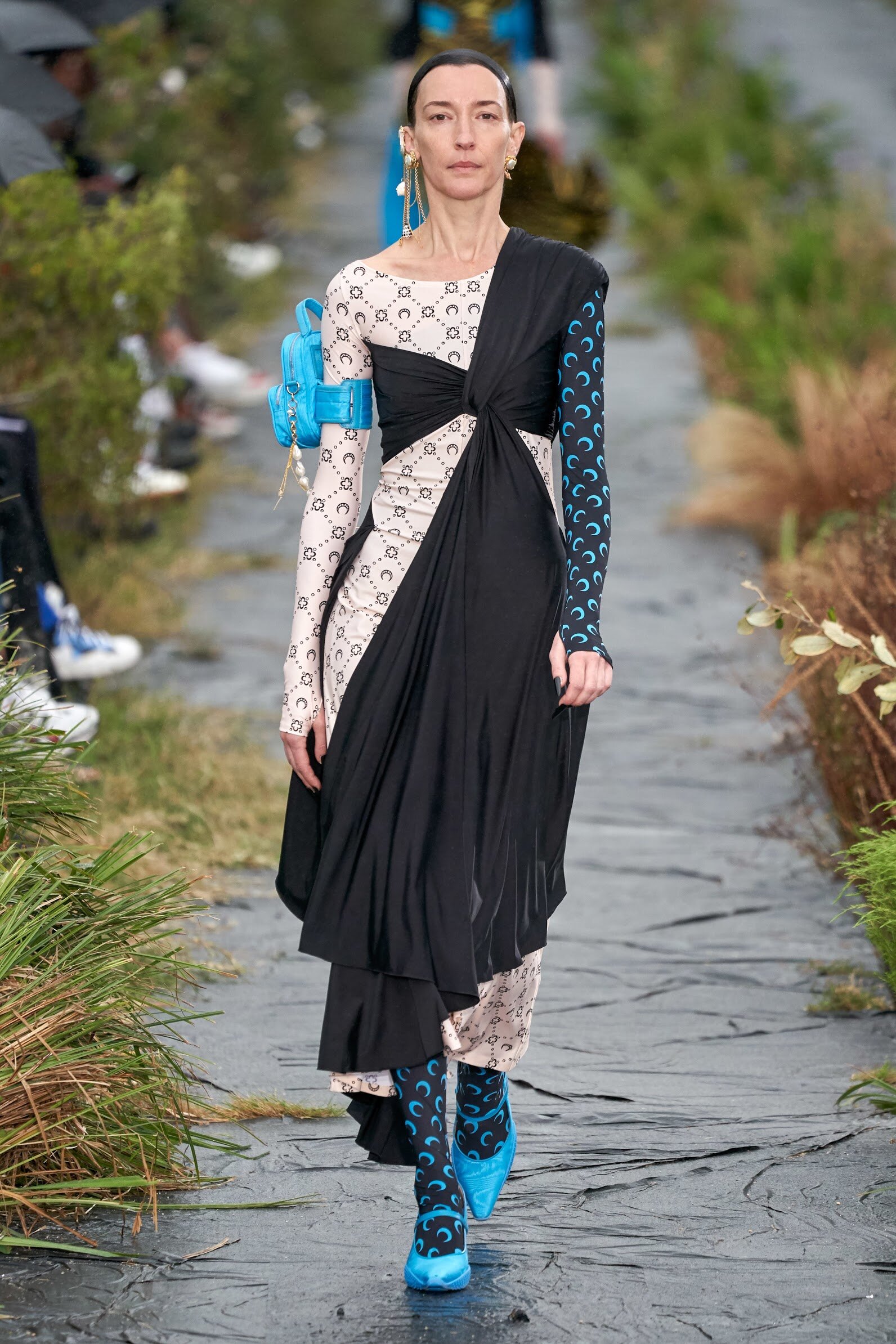
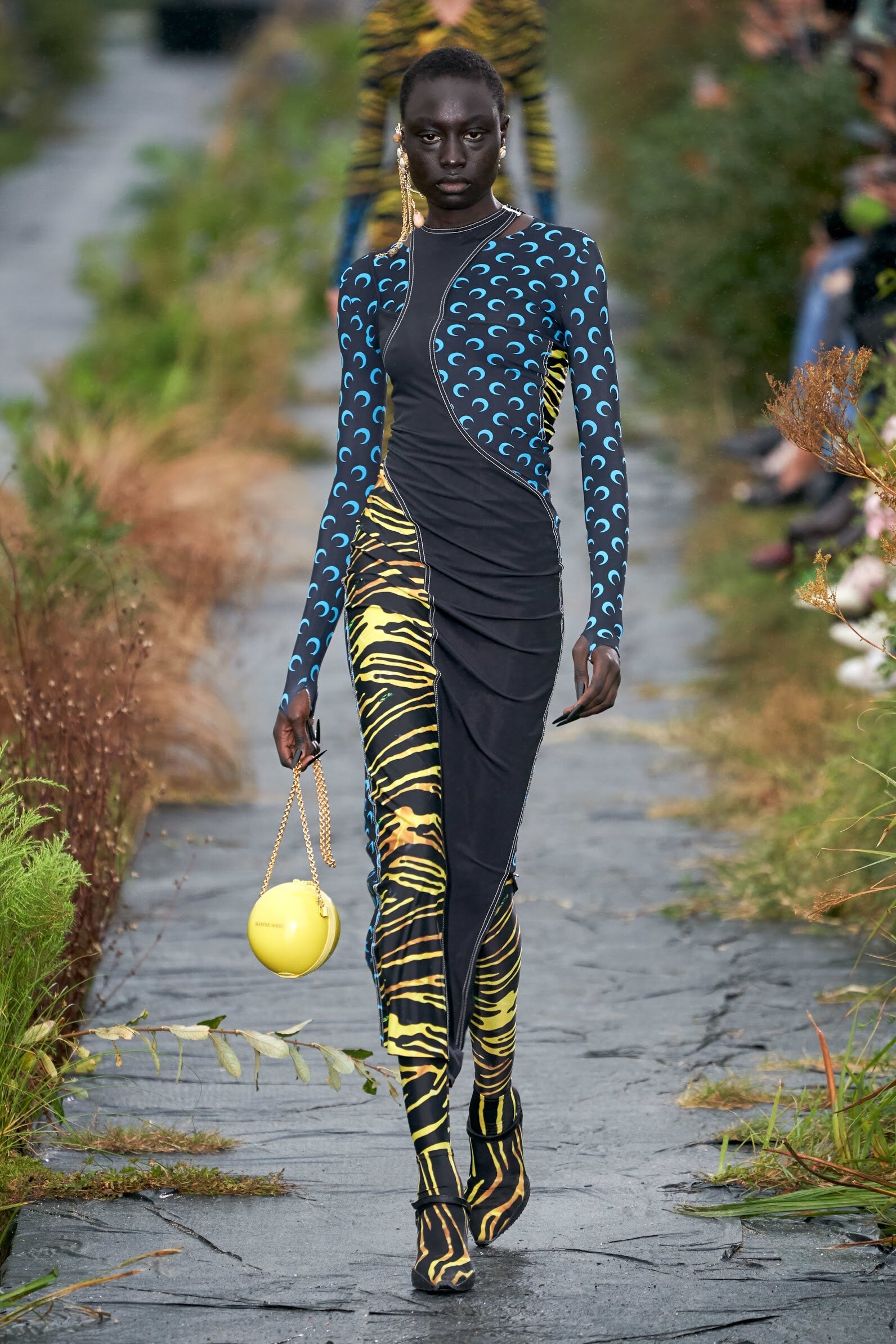
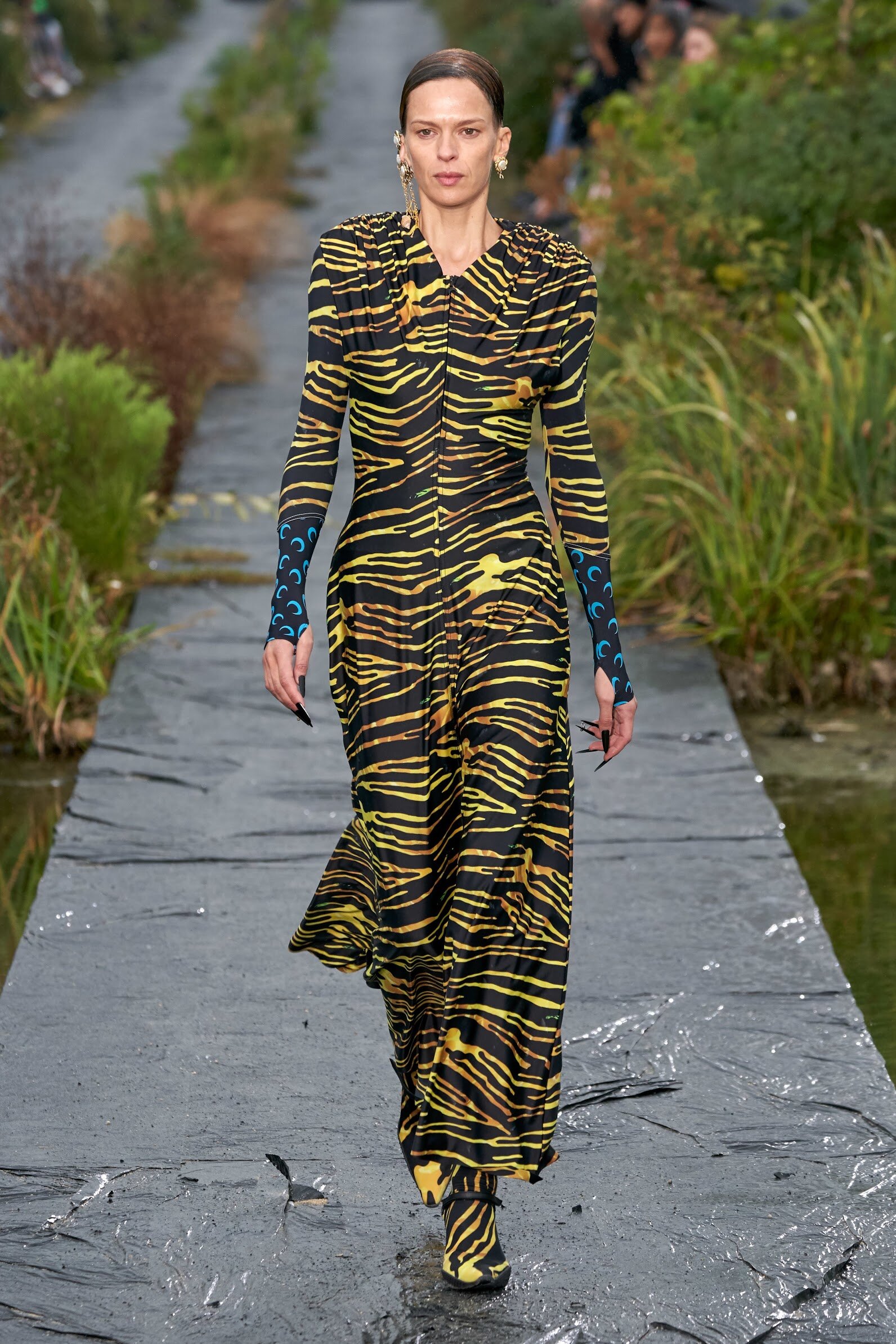
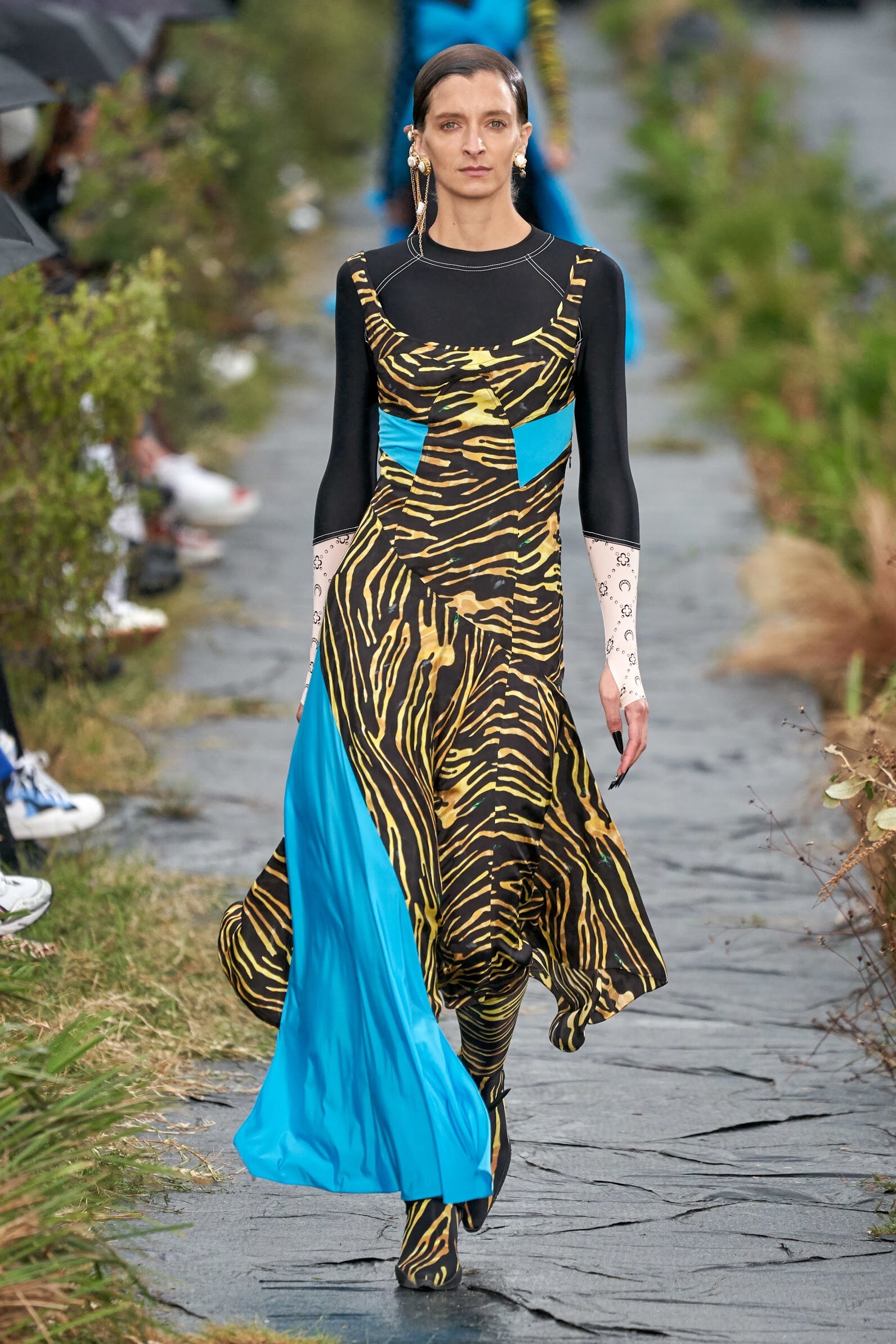
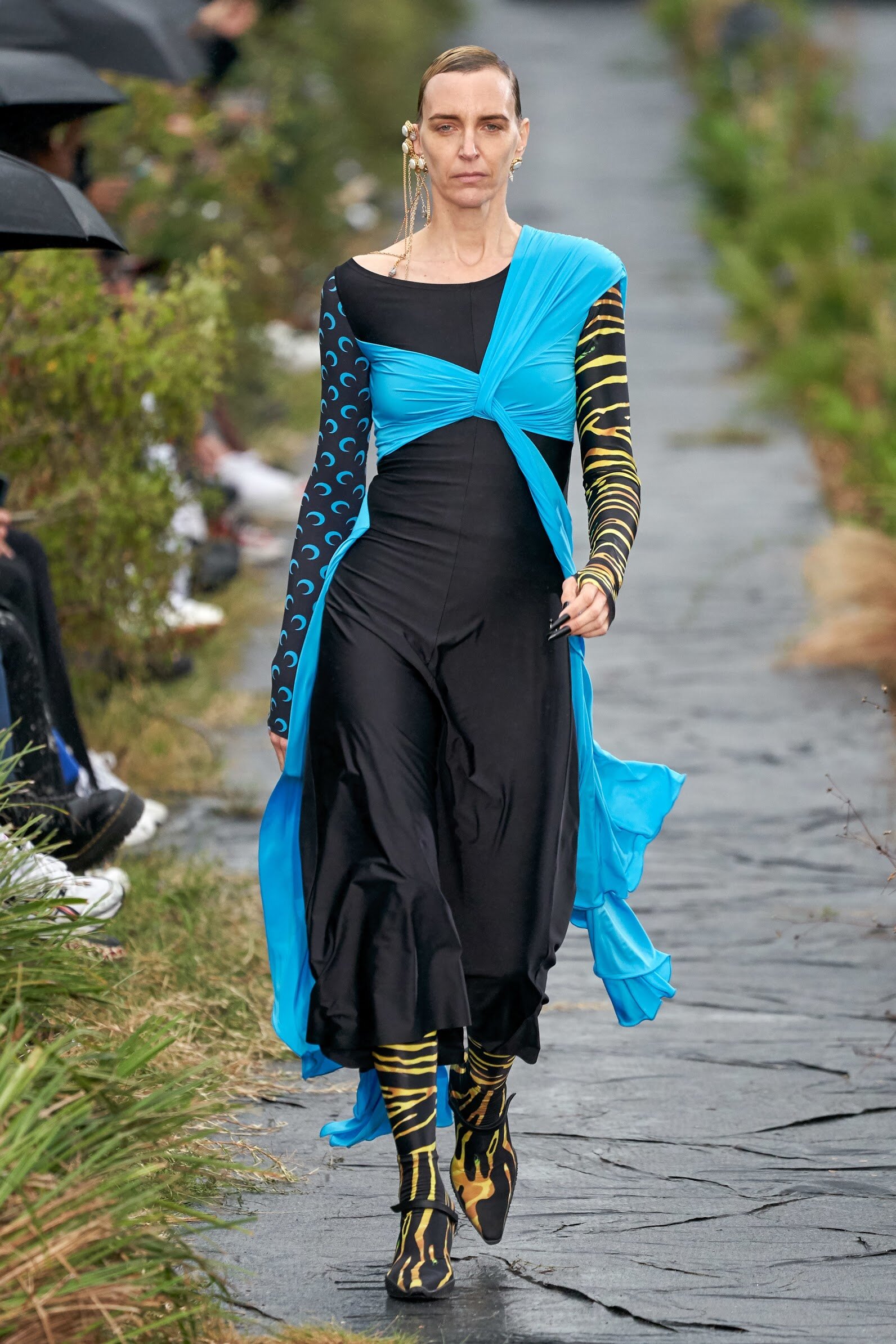
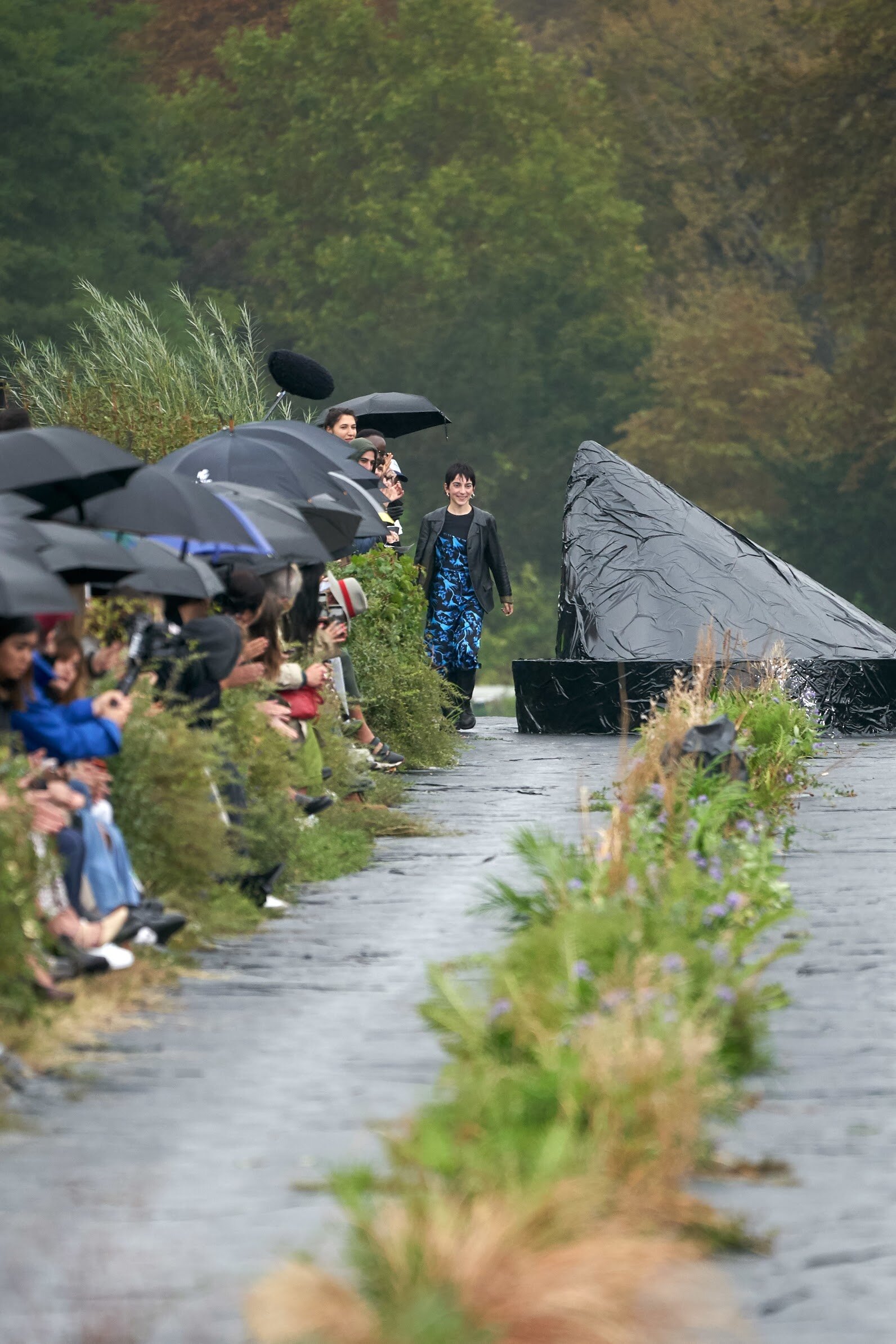
Words by Cailan Ferguson

